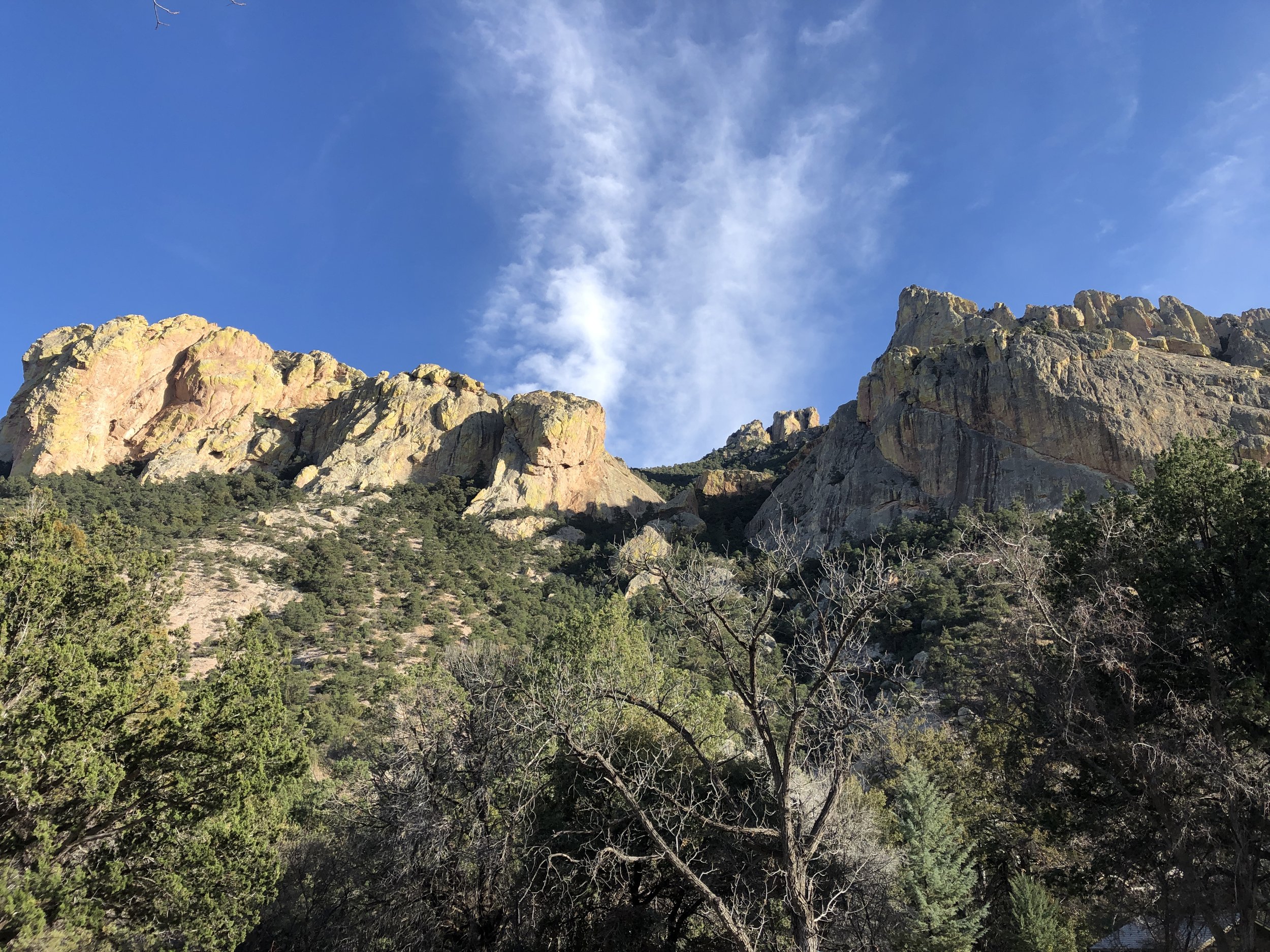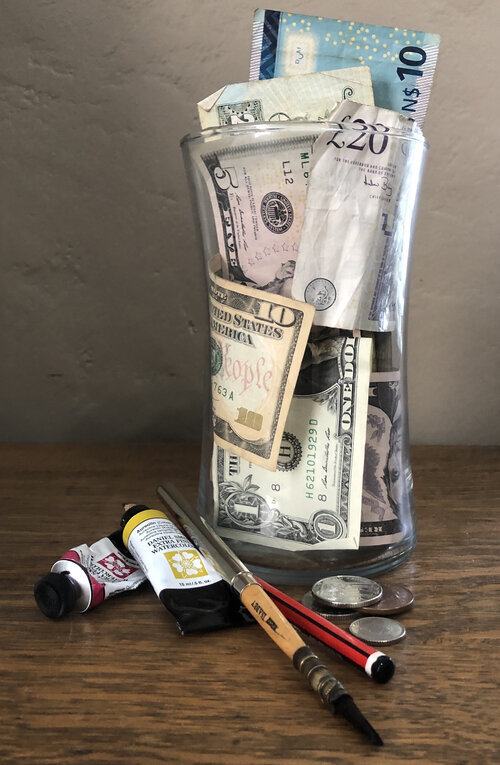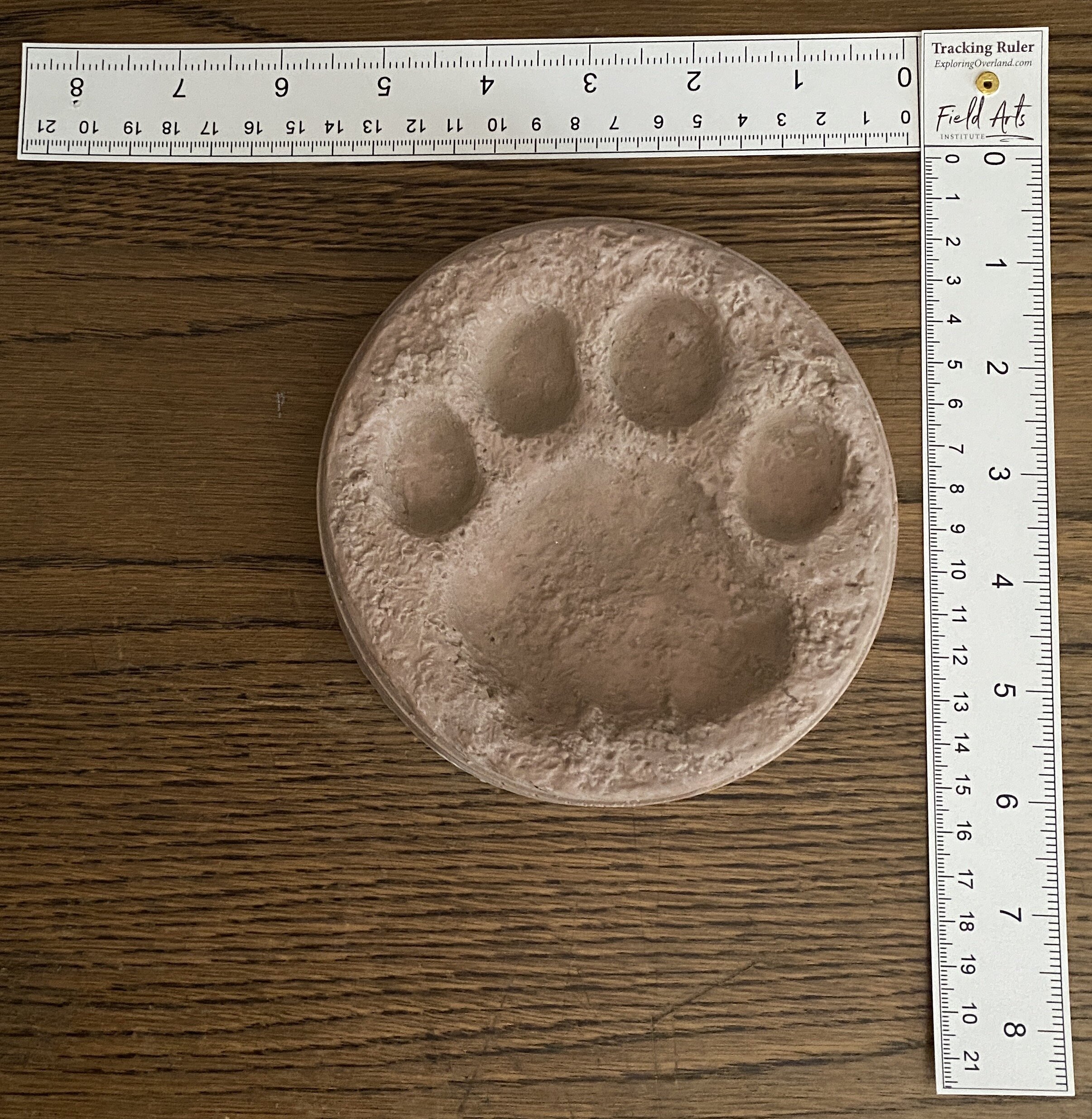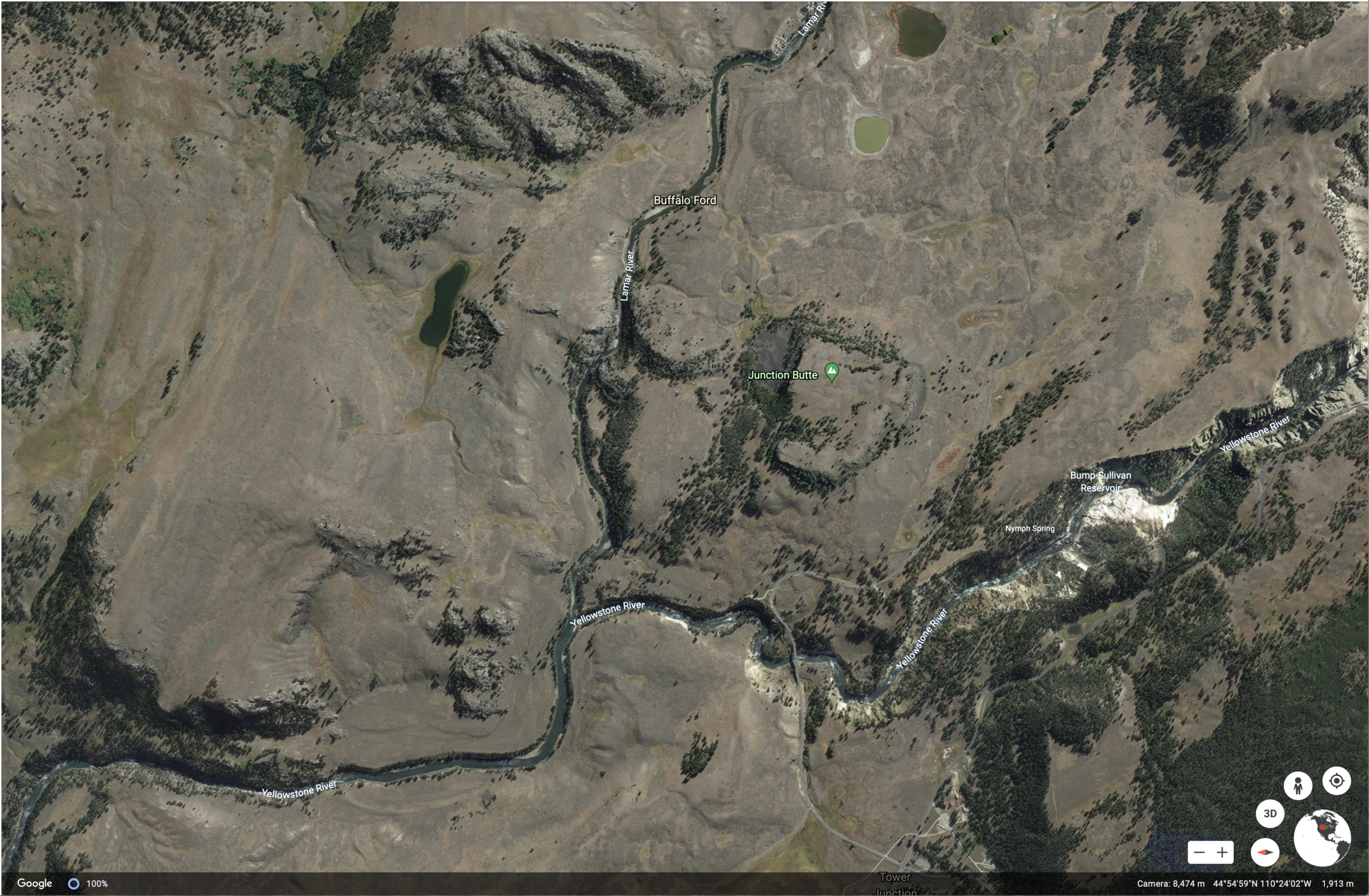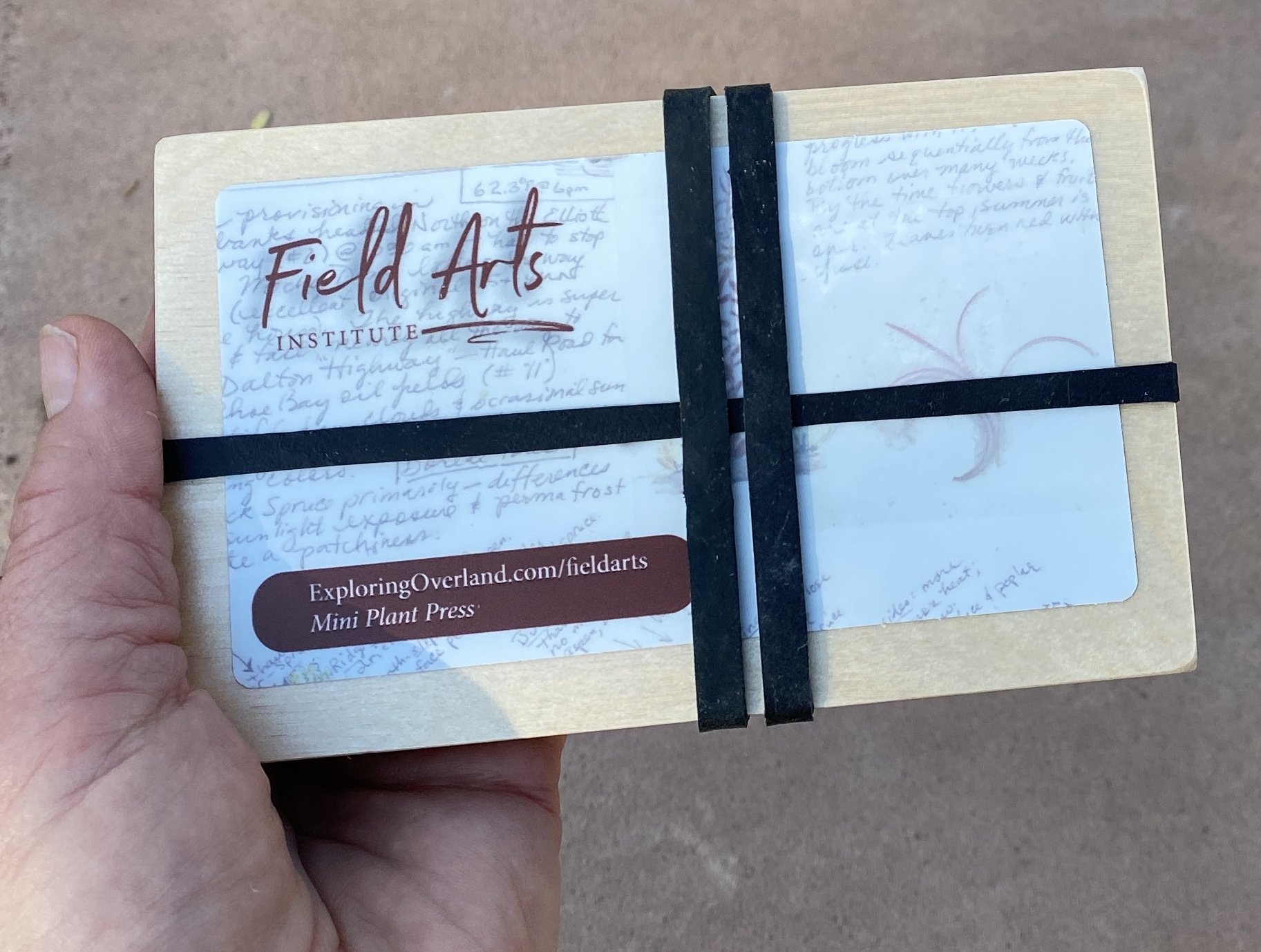Field Arts Workshop: Ancient Ochres
Human use of pigments to express ourselves may be—literally—a watershed moment in evolutionary time. Perhaps among the first to be used were iron oxides (ochres) such as at France’s famous Lascaux. Archaeologist Tammy Hodgskiss wrote: “People may say ochre is the earliest form of art and symbolism, but there’s more to it. Ochre shows how our brains were developing, and that we were using our environment. It bridges the divide between art and science.”
In this deep dive into the science of artistic pigments and look at our earliest history as artists, we will also learn to create beautiful images in our field notebooks and nature journals using natural earth pigments such as ochres (yellow, red, purple), manganese, lapis lazuli, graphite, and more.
Length: 2 hours
Resources from the Workshop
CHAT transcript — click > HERE <
Click to initiate download of a PDF of the workshop presentation: https://www.dropbox.com/s/qk9sp3baj3v8u7s/Ancient%20Ochres%2011-13-2021.pdf?dl=0
Pigment and natural paint sources:
Greenleaf & Blueberry – handmade in Colorado by Jess Greenleaf and her team, amazing quality and natural pigments
Clearwell Caves (you will need to call; scroll to the bottom of this page for pricing)
Natural Earth Pigments – great pigments and mulling equipment
Cornelissen & Sons – classic London colourists for artists for several hundred years
Kremer Pigments – fantastic source with full disclosure of pigment origins; lots to choose from in earth / iron oxides https://shop.kremerpigments.com/us/shop/pigments/
For the Love of Soil – women-owned who are also soil scientists
Beam Paints – indigenous women-owned; I don’t have personal experience with the quality of these paints
Natural pigment demo landscapito of Cave Creek Canyon in the Chiricahua Mts., southeast Arizona; pigments from top to bottom: Chiricahua Red Ochre (wildcrafted by Roseann); Yellow Ochre (Greenleaf & Blueberry); Sleeping Beauty Turquoise (Daniel Smith); Lapis Lazuli (made by Roseann from pigment from Cornellisen & Sons, London); Point Reyes Quaternary Dune (wildcrafted by Roseann).
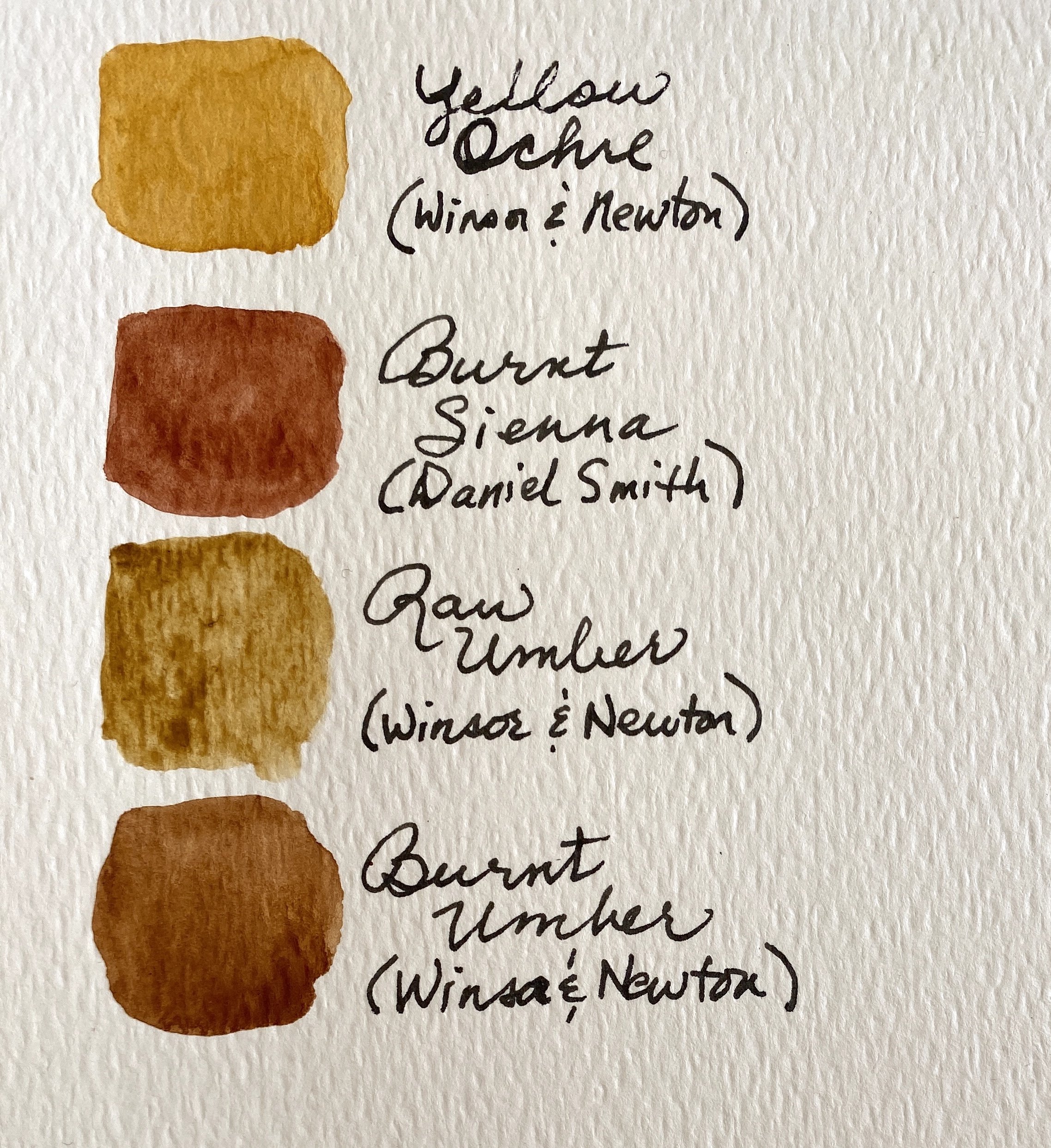
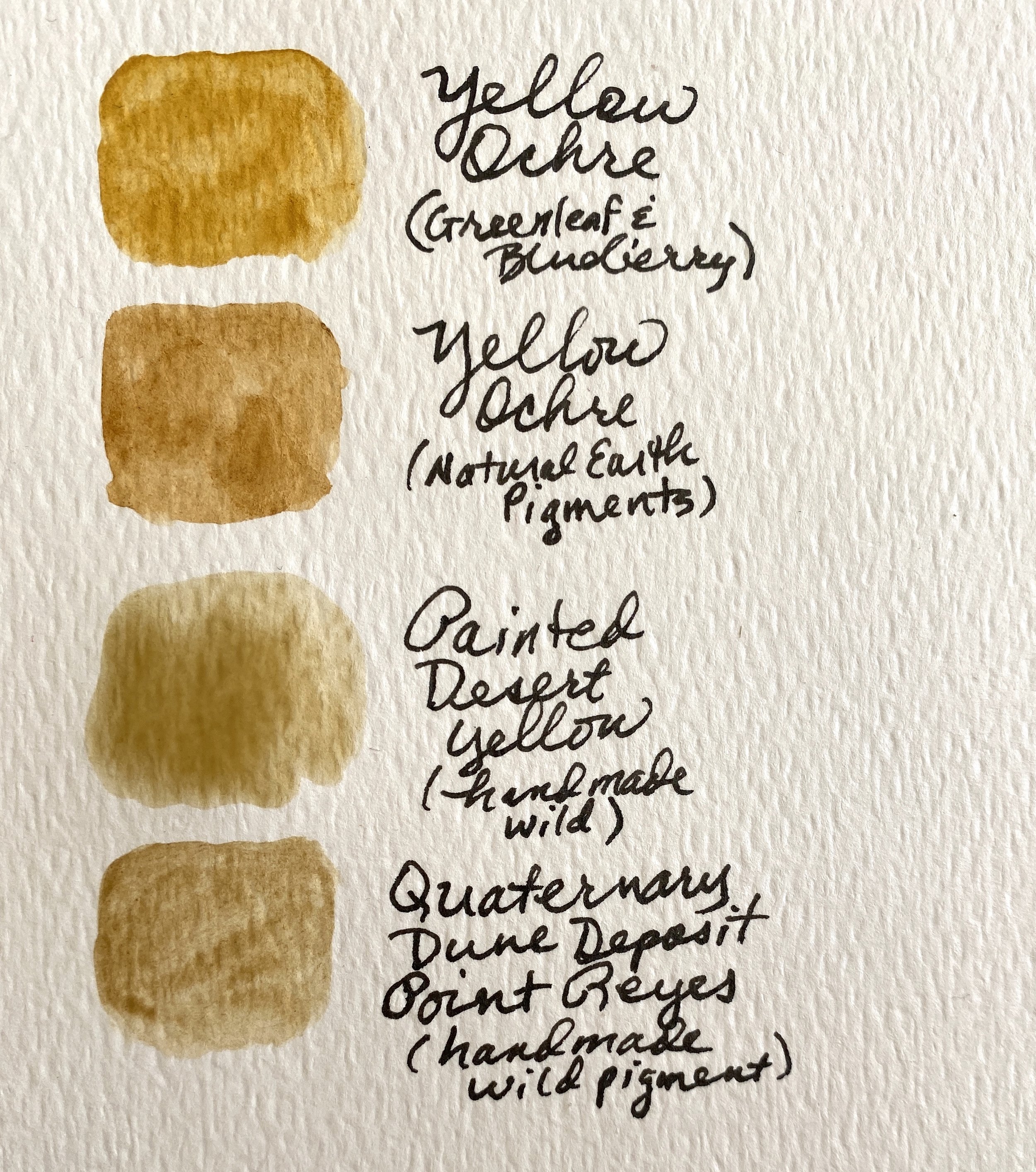
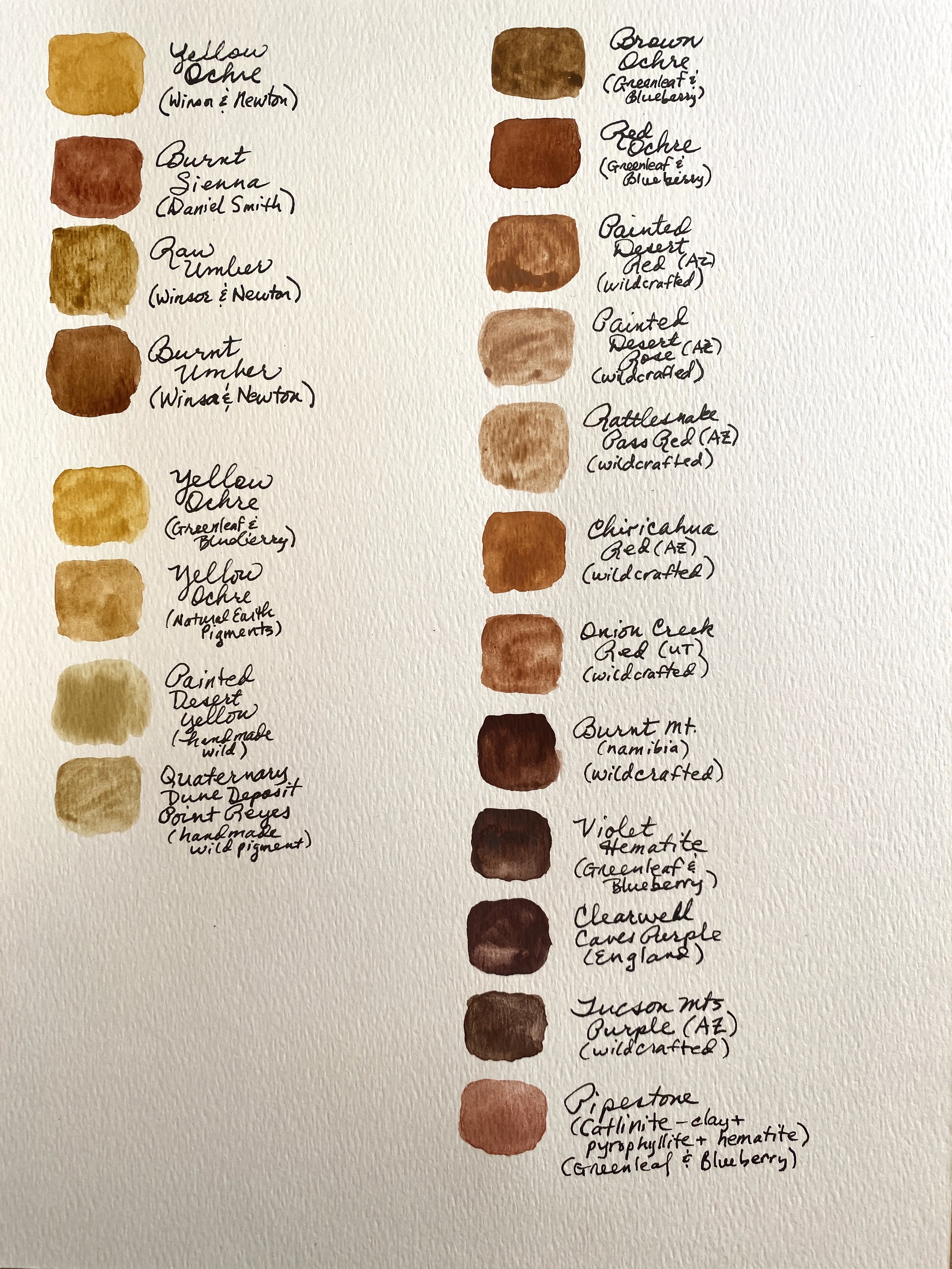


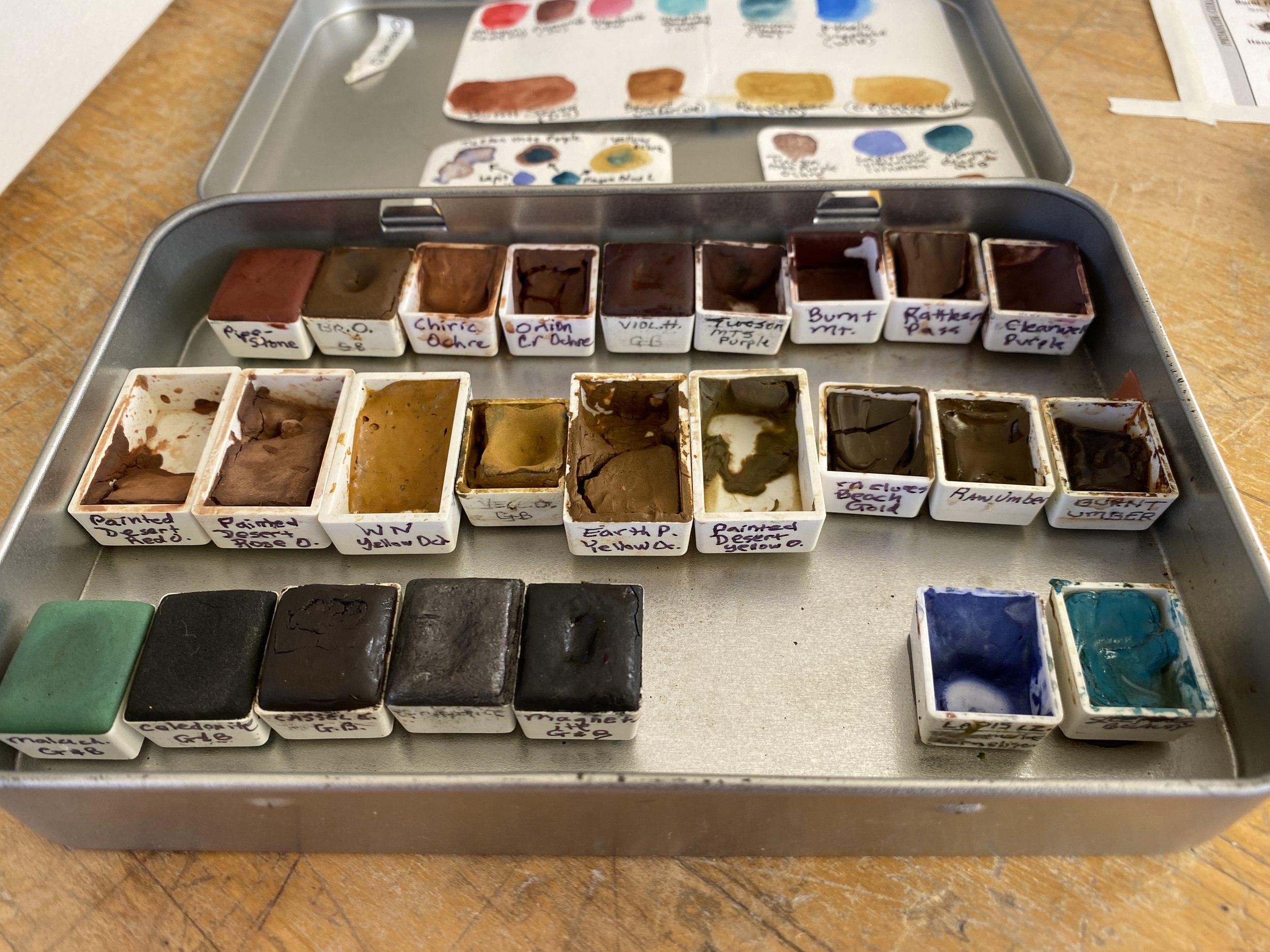
Images from Workshop Participants
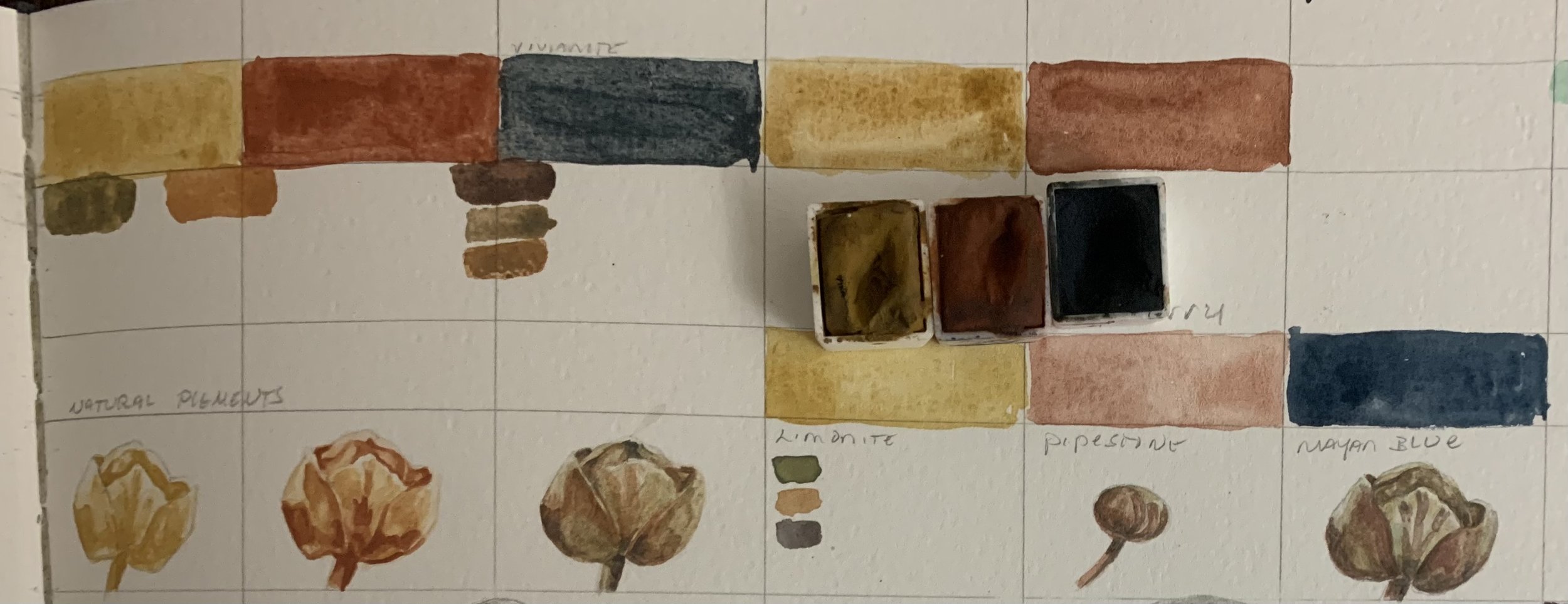
Field Arts Workshop: Elegant Ink for Field Notebooks
Join me for a celebration of the art of elegant ink in our sketchbooks. While I do love color in my journal, I also love the beauty of well-wrought pen sketches.
We’ll cover types of pens and inks (from ballpoint to fountain pens, including the pluses and minuses of the types); practice mark-making and values; and work on a couple of different types of sketches using one image to create each, so we can see how different styles of linework each produce a different “feel” on your pages.
Length: 2 hours
Images at right: Creating various “palettes” for your marks is a great exercise and very useful to keep tucked in a pocket of your journal for reference. The different types of stroke, texture, and tone are like words in a language or paint colors in a palette: you choose each for a different effect, feel, tone, or emphasis.
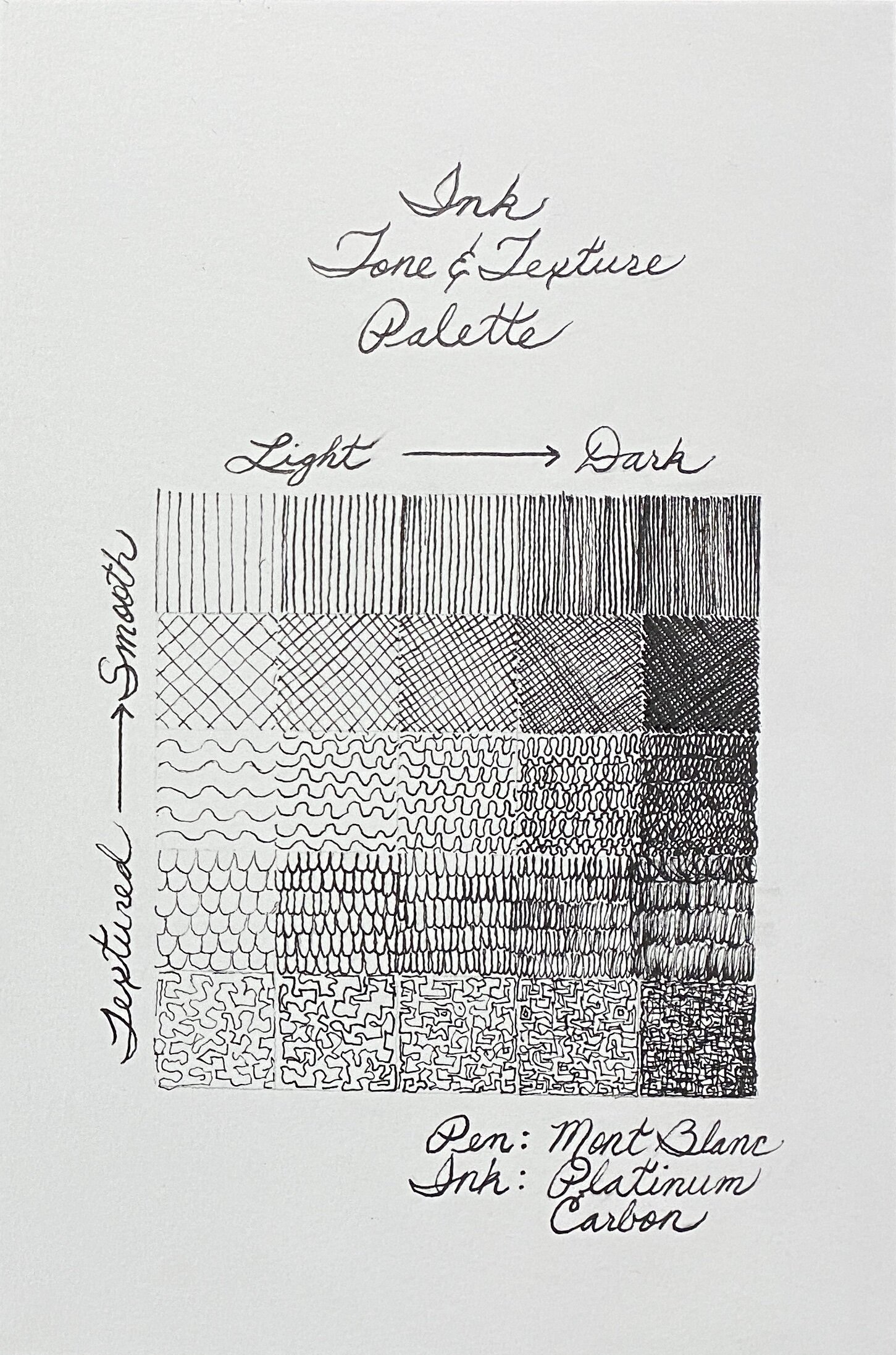
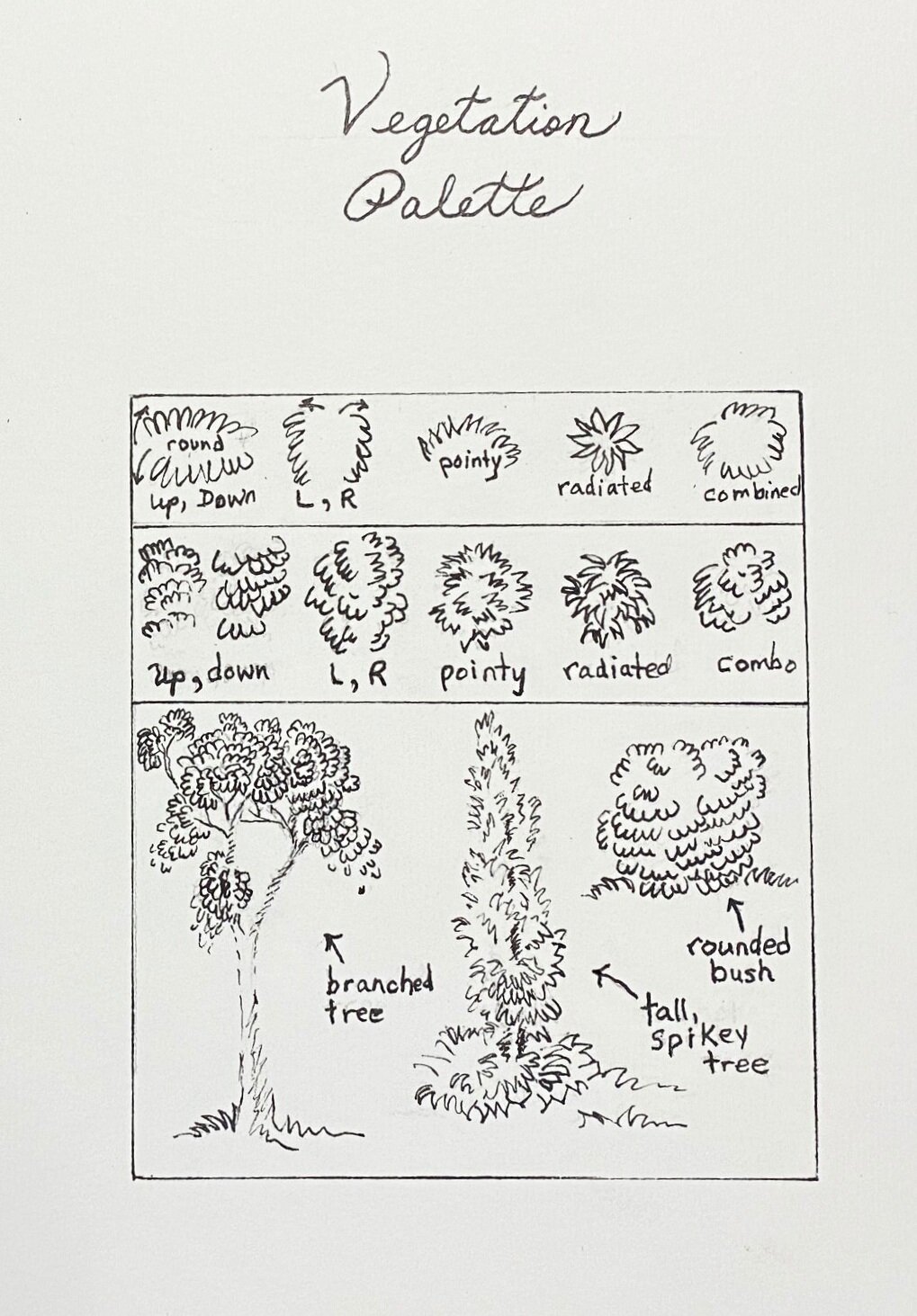
Resources from the Workshop
CHAT transcript — click > HERE <
Click image BELOW to initiate download for the workshop PDF with all the information, sample images, and links. Or, use: https://www.dropbox.com/sh/rvlzr0a9hezdgjr/AACw6pH9jwhj6sQ-rvmM_GGwa?dl=0
Bonus! I did a short video (no sound) of how to clean and refill a fountain pen:
DEMOS FROM THE WORKSHOP

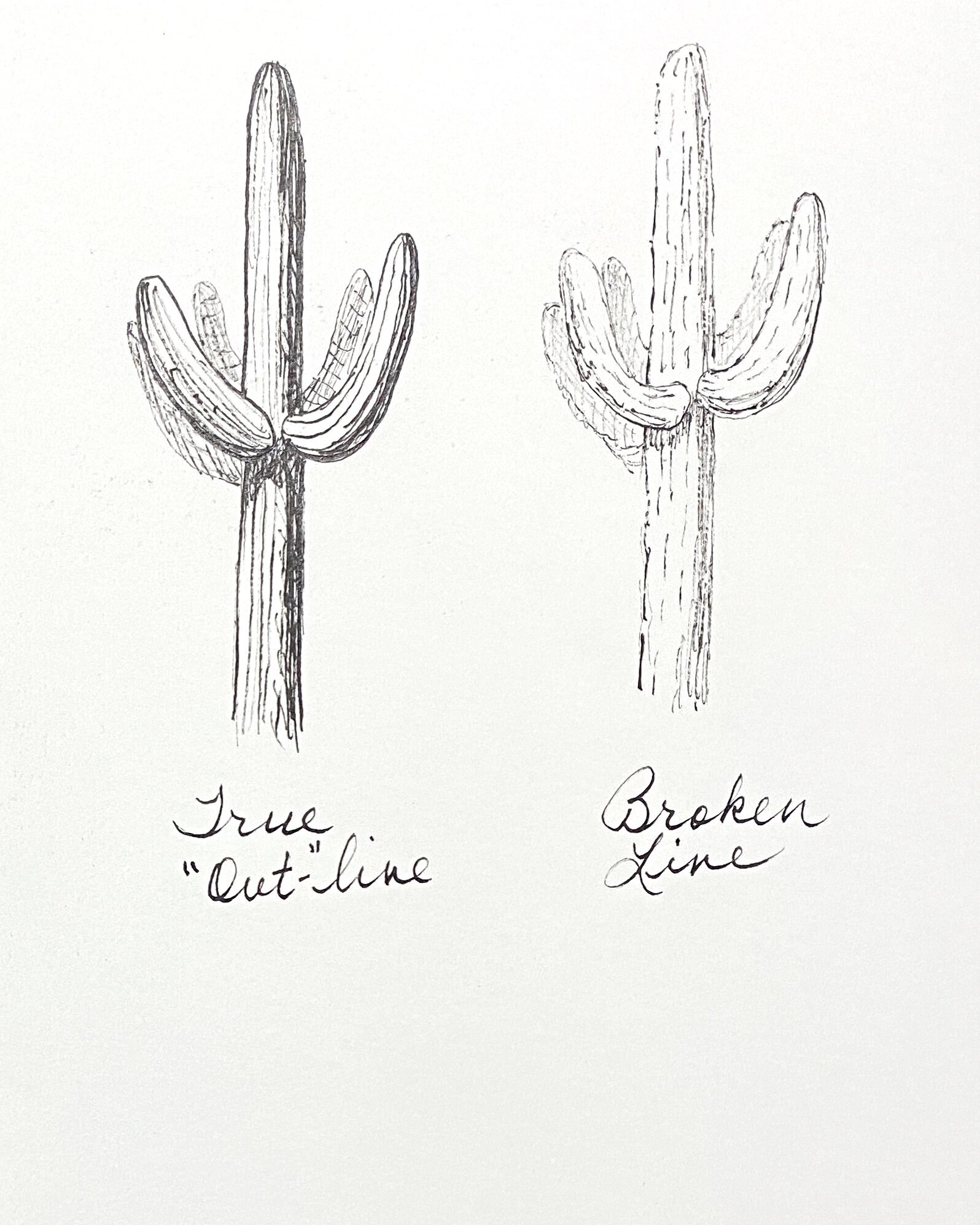
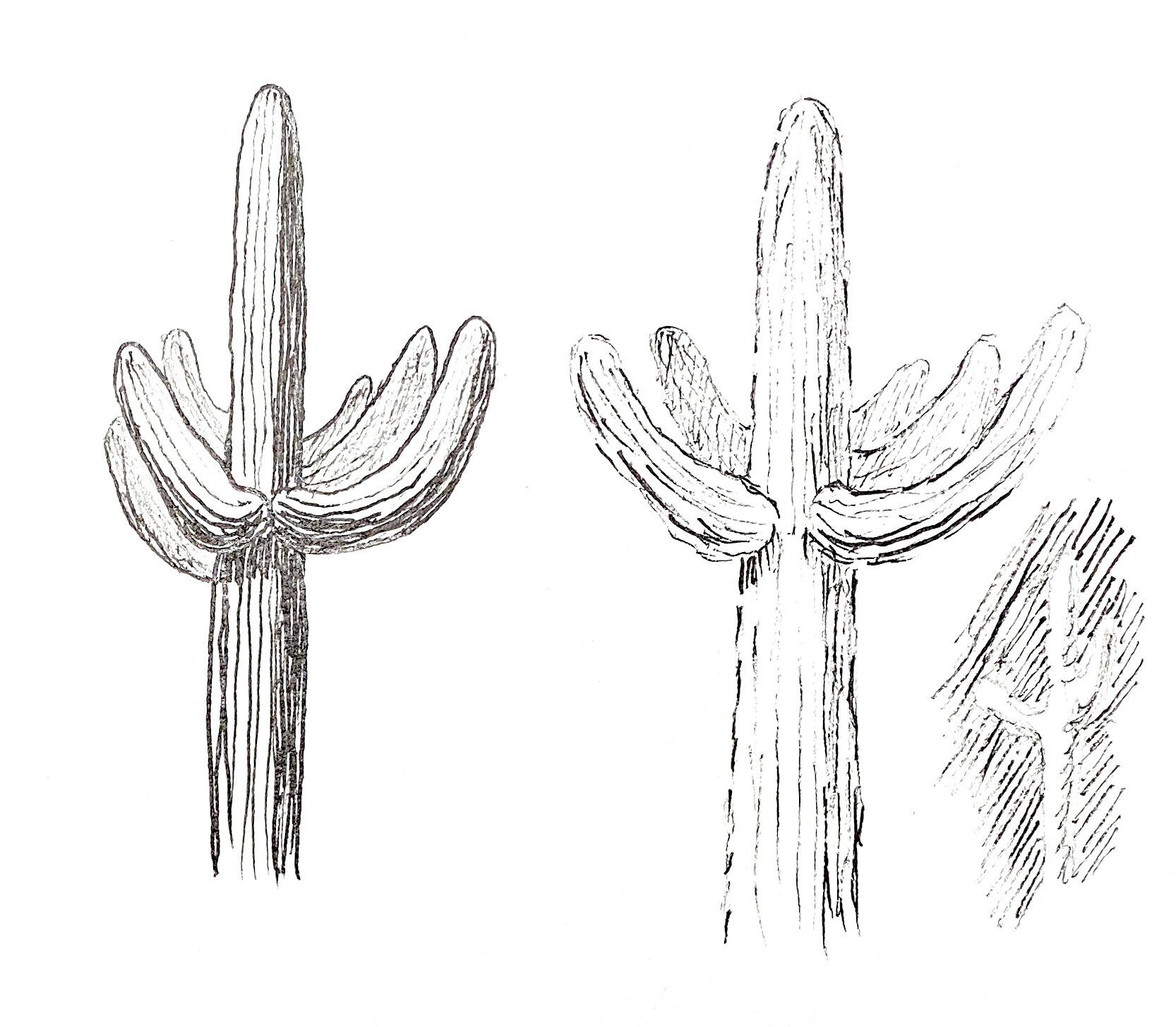
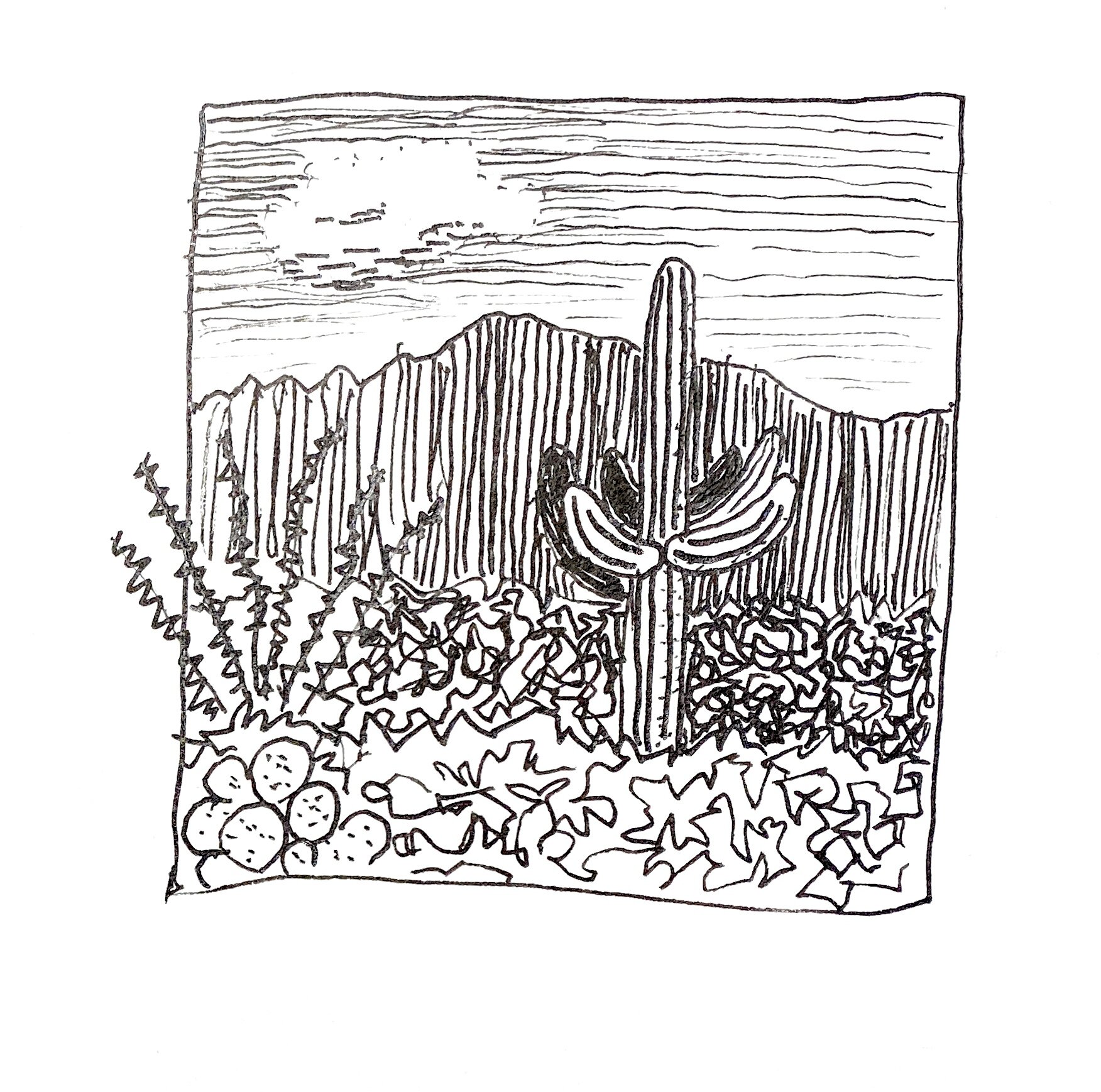

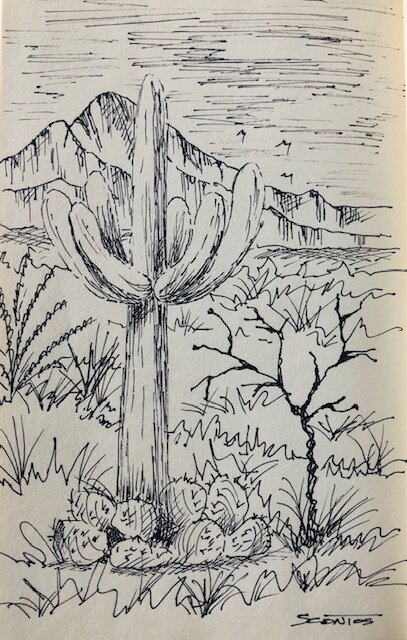
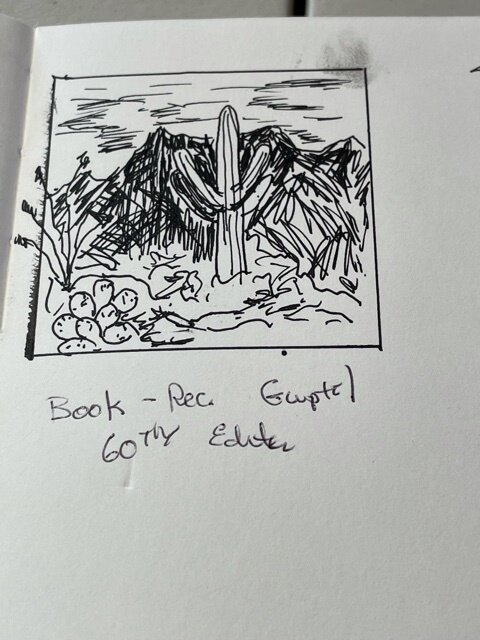
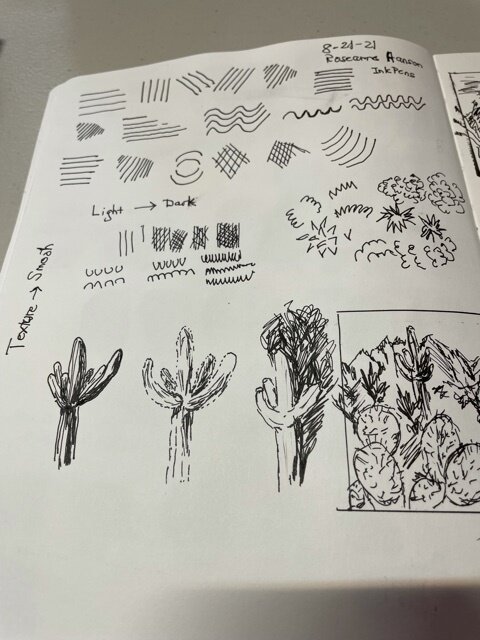
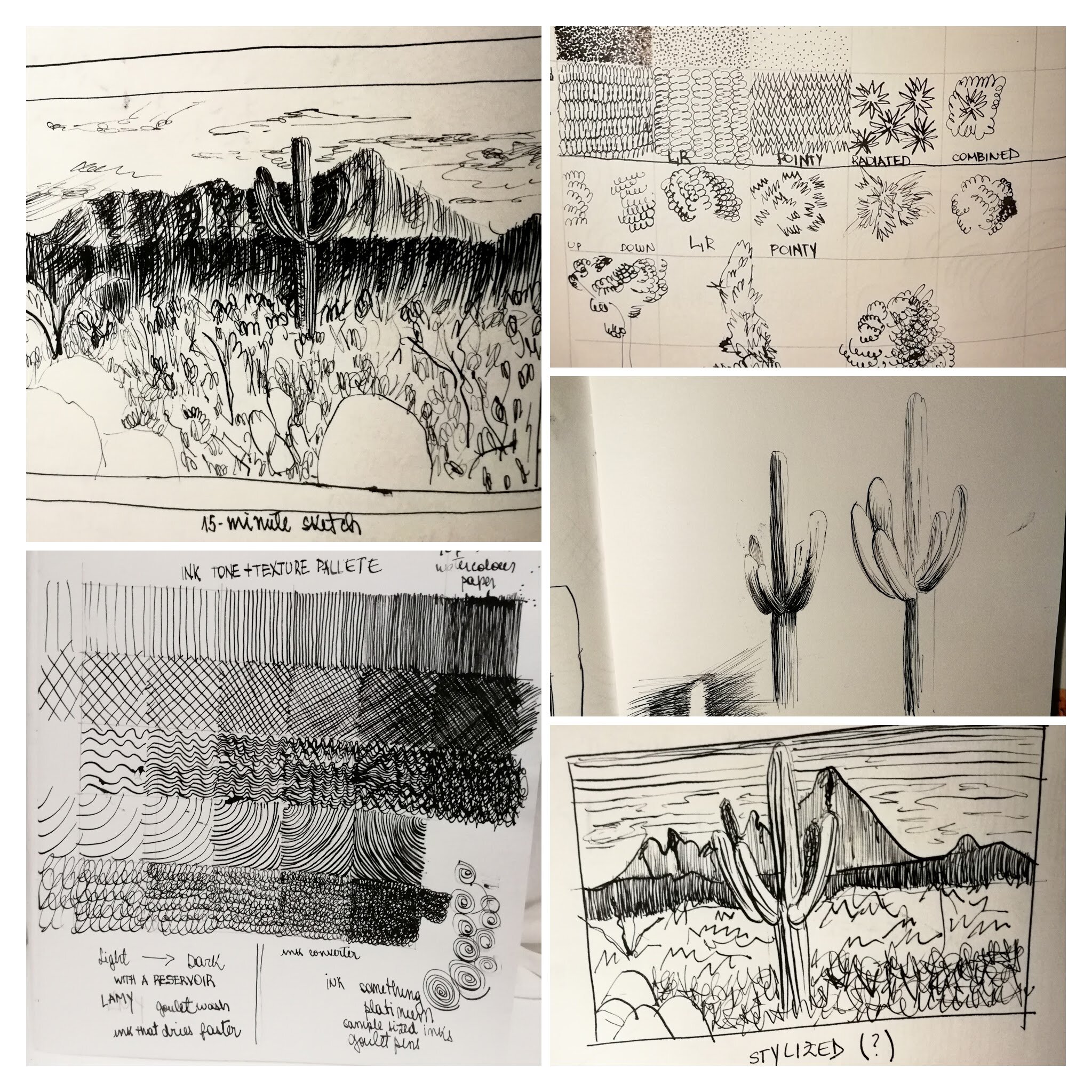
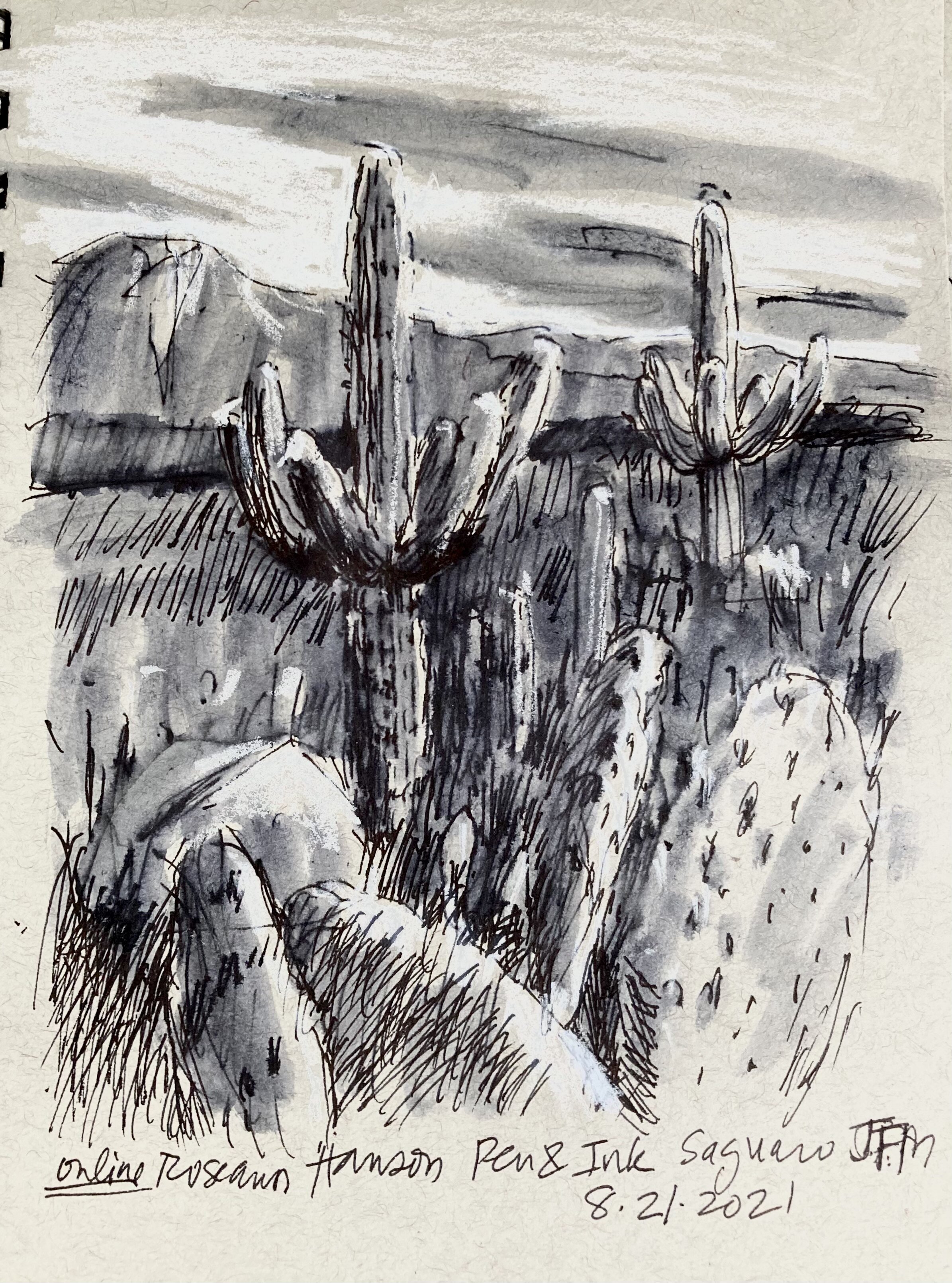
Field Arts Workshop: Weather 101 for Field Notebooks
Creating a cloud ID chart is a great way to practice cloud-painting skills as well as to learn the main cloud types.
Metadata for your field notebooks is a crucial addition, to give your entries a solid foundation in context: date, time, sunrise / sunset, moon phase, and weather. Weather is fun to learn: What are the clouds? How do you ID them? How do you tell the wind speed? What are the symbols for recording weather?
In this free Field Arts tutorial, we will dive into learning about weather data, what is climate vs. weather, where weather forms and how, and how to ID clouds. Then we’ll create a cloud-chart that you can keep in your journal for future reference.
Length: 2 hours
Resources from the Workshop
pdf with all links and download link for images and ALL THE charts (CLICK IMAGE):
Click image to initiate download. Or, use: https://www.dropbox.com/sh/rvlzr0a9hezdgjr/AACw6pH9jwhj6sQ-rvmM_GGwa?dl=0
SUGGESTED PAINTS AND SUPPLIES:
Ruler and pencil
Pen with waterproof ink
And for the color, two approaches:
1) Traditional:
- watercolor paper (9x6 or larger), at least 90 pound
- cobalt or cerulean; these are pretty and wash easily, and also lift easily. French ultramarine is wonderful but does not lift as well and does granulate a little, so it will settle into the texture on your paper, which you may or may not like.
- burnt sienna to mix with your blue to create a nice gray for the clouds
- alternatively, shadow violet
OR
2) gouache:
- toned paper (dark grey or tan)
- gouache paint in white and blue and burnt sienna
I actually found the toned with white gouache to be much easier for this chart exercise!
You can find my list of minimalist colors and tips on color mixing here: https://www.exploringoverland.com/field-arts-tutorials-list/2020/7/5/minimalist-watercolor-for-nature-journaling
COLORS I DEMONSTRATED:
Manganese Blue (Old Holland)
Cyan (Greenleaf & Blueberry)
Cobalt (Daniel Smith)
Cerulean (Daniel Smith)
French Ultramarine (Daniel Smith)
Pthalo Blue (Green Shade, Daniel Smith)
Goache Set from Caran D’Ache (white, yellow, blue, red, burnt sienna)
This is the reference image for creating your own cloud chart for your journal.
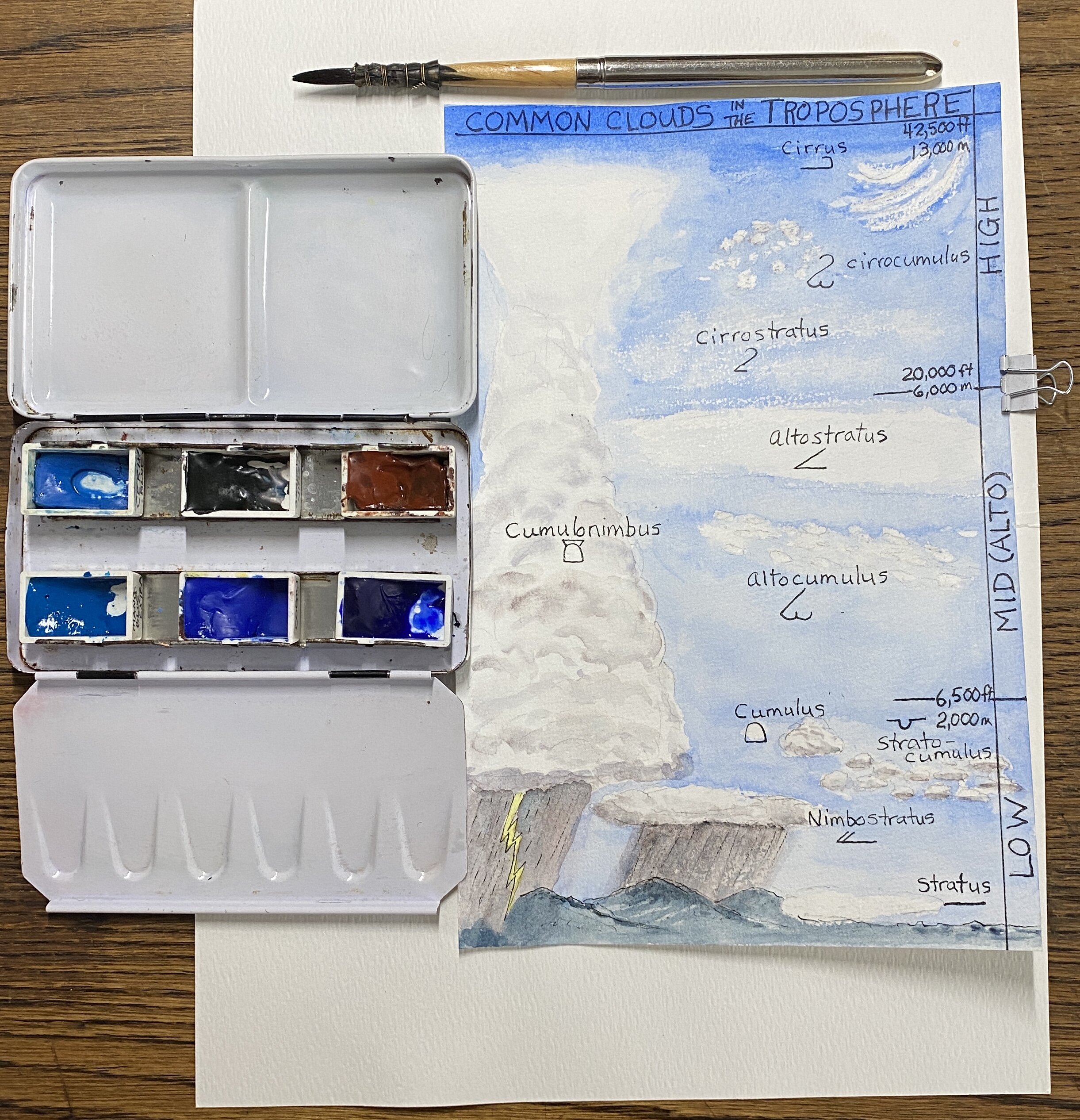
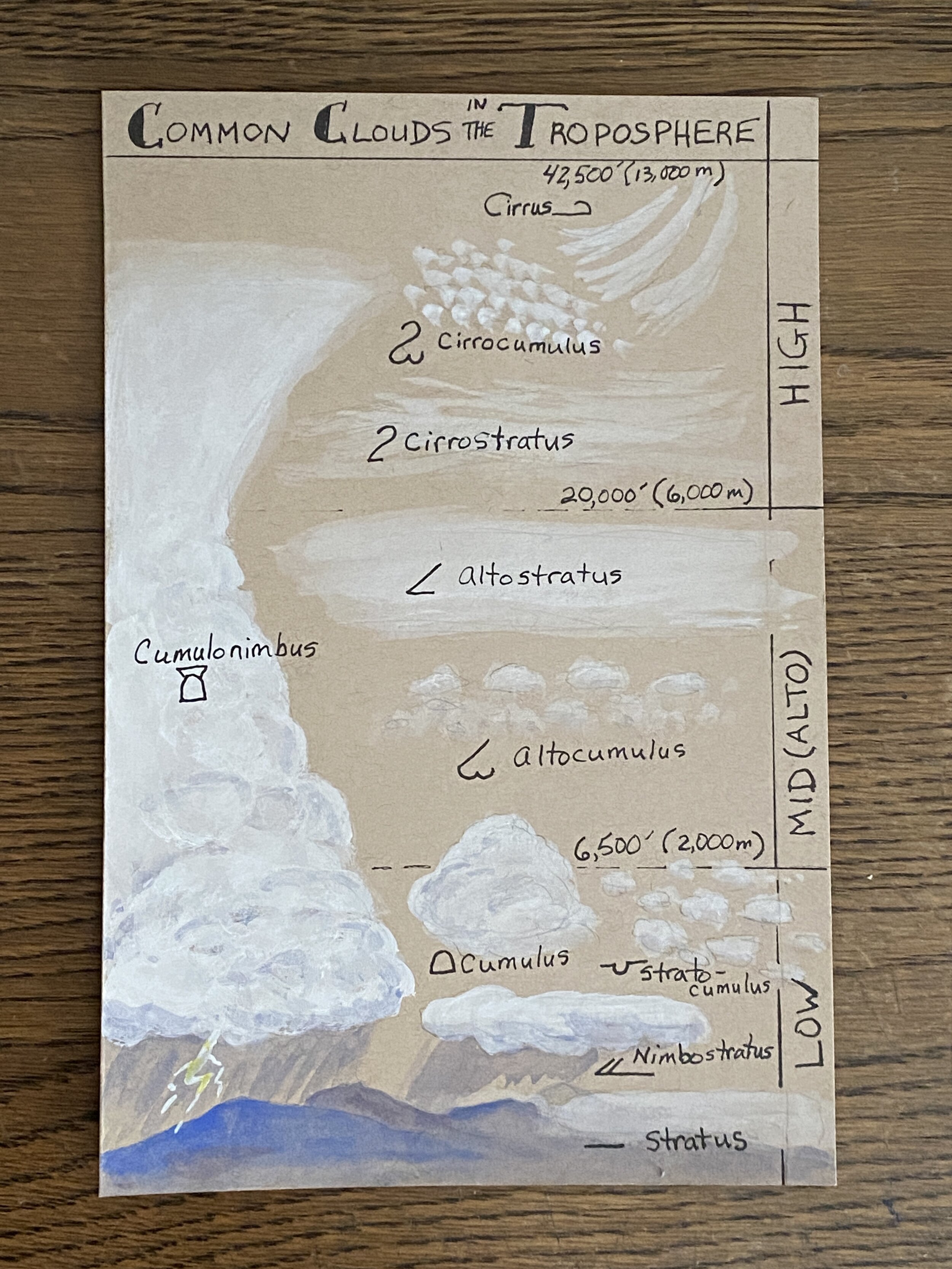
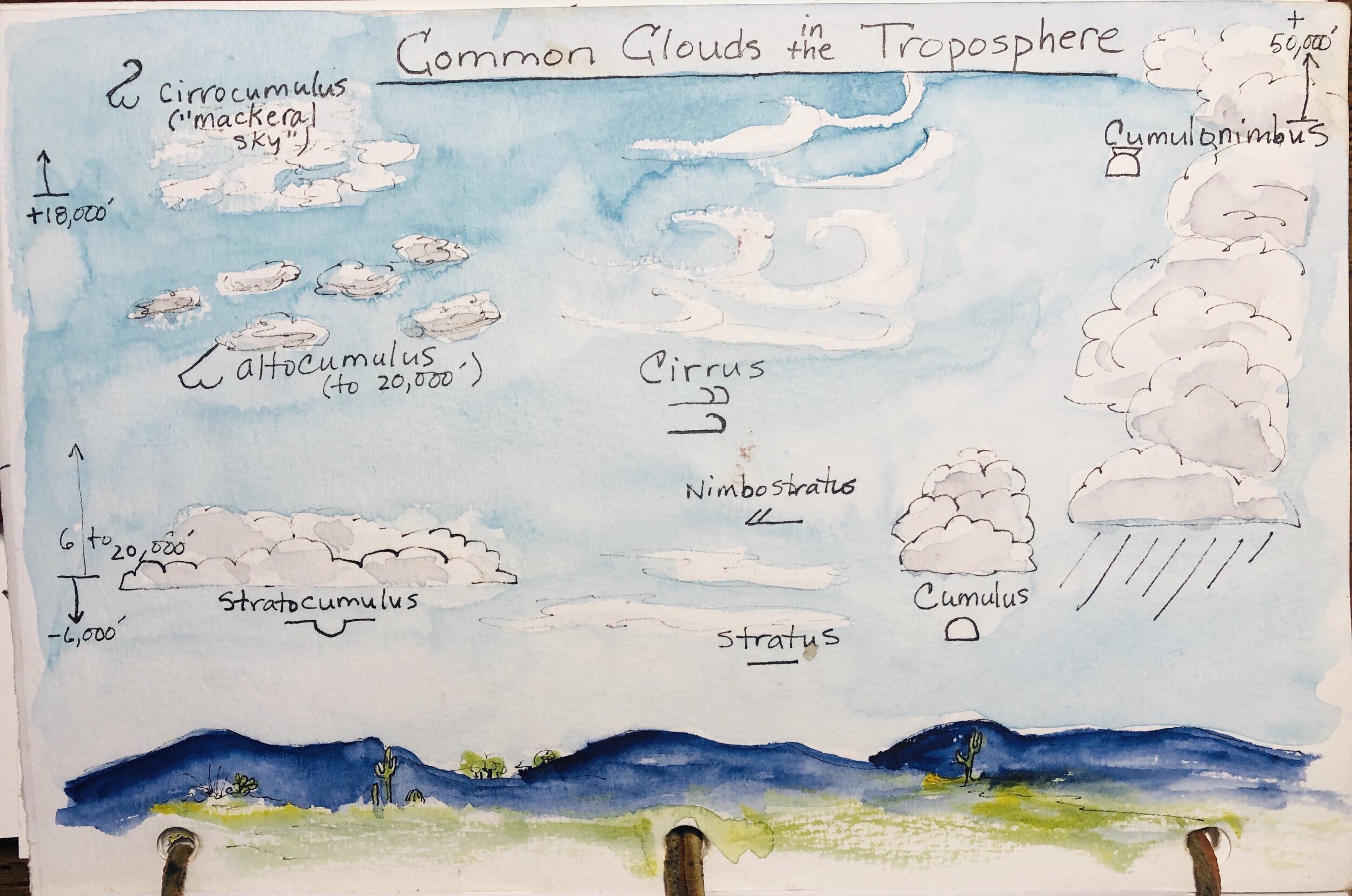
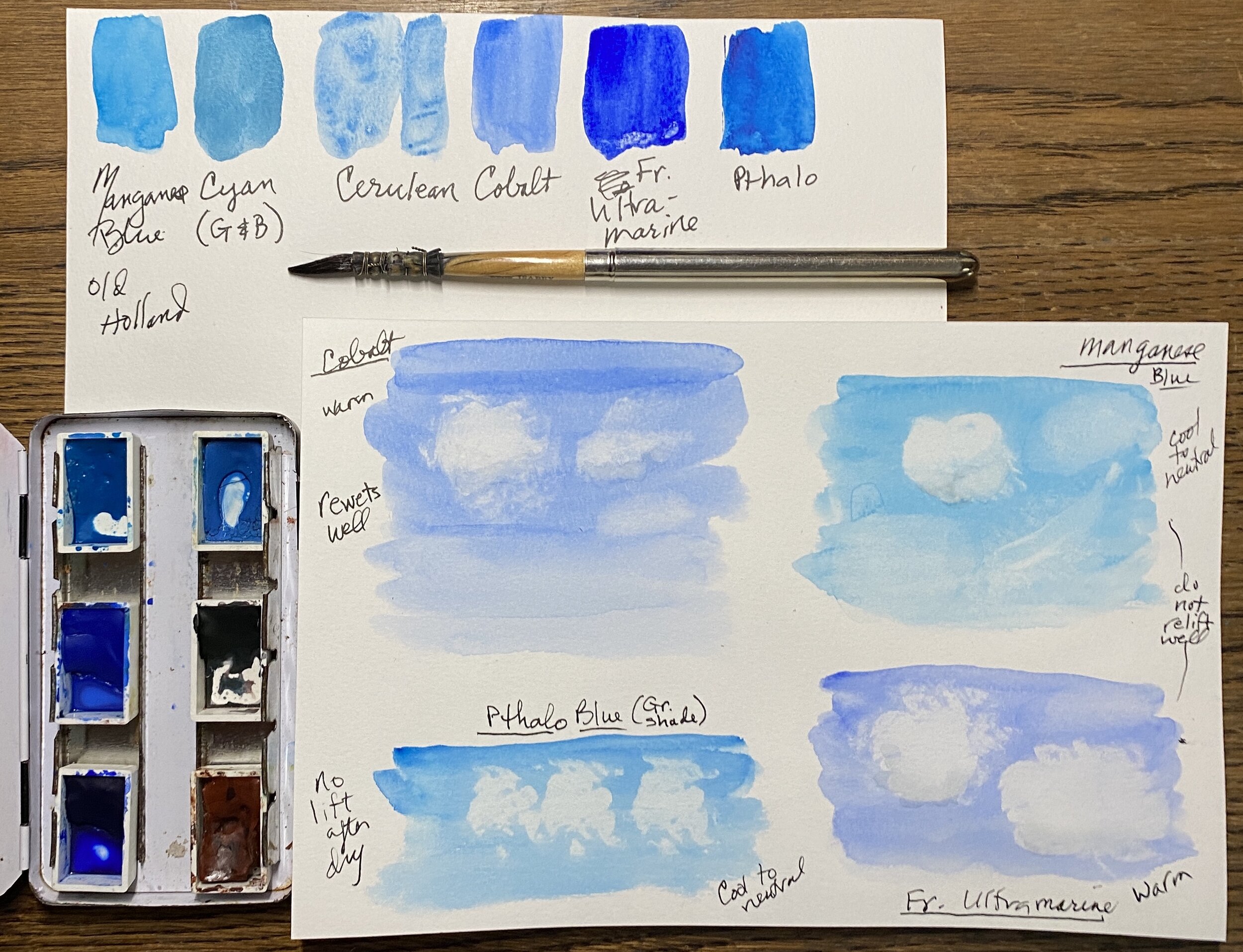
Field Arts Workshop: Animal Tracking 101 for Field Notebooks
Female lion and cub tracks, Great Rift Valley, Olkiramatian, Kenya (click to enlarge).
Join me for a free online workshop on the basics of animal tracking—and different ways to add them to your field notebooks and nature journals. I’ve spent 30 years tracking wildlife and teaching tracking for conservation groups, and my husband Jonathan Hanson and I wrote the Basic Essential Guide to Animal Tracking.
Learn how to quickly tell canine from feline tracks, domestic dogs from wild, different gait patterns, and how to “read” a track story.
I’ll also show how to use my clear Perspex Palette-Easel ) to trace a track, and a template for making your own unique track ruler, as well as a free Quick Tracking Tips card.
Length: 2 hours
SEE BELOW FOR
Resources from the Workshop
Perspex palette: Head out to your local hardware store such as Ace Hardware and they should have a section where they sell clear polycarbonate (perspex) sheets and will cut them to size for you. Price depends on size, but around $10. If you want to use the sheet as a holder for a metal paint kit, add a strip of magnet tape.
Or, you can order from my shop (there may be a delay in shipping these in March 2025). See below.
Here’s a free printable tracking ruler, or order the same plastic original one that I use in the workshop, from Sue Morse at KeepingTrack.org. Sue is one of my tracking mentors. Her book is amazing, and recently updated.
Downloads (Tracking Tips Bookmark and Tracking Ruler) — IMPORTANT: These will open in Dropbox; click the DOWN ARROW in the upper right (it’s small); a box will open trying to get you to sign in or sign up but click the sentence underneath that to Continue Without.
field guides:
“Basic Illustrated Animal Tracks” by Roseann and Jonathan Hanson https://www.amazon.com/Basic-Illustrated-Animal-Tracks/dp/1493017179
The two best deep-dive tracking training books:
Paul Resendez, “Tracking and the Art of Seeing” https://www.amazon.com/Tracking-Art-Seeing-Animal-Tracks/dp/0062735241
and Sue Morse, “Wildlife and Habitats” https://keepingtrack.org/keeping-track-store
Good in depth basic field guides:
“Scats and Tracks of the Desert Southwest” by James C. Halfpenny, illustrations by Todd Telander https://www.amazon.com/Scats-Tracks-Desert-Southwest/dp/1560447869
and
https://www.amazon.com/Mammal-Tracks-Sign-American-Species/dp/0811737748
Recommended in the chat:
Oldie but goodie: Animal Tracks by Olaus J. Murie, Peterson Field Guide Series. Love the line work and clear illustrations.
“Mammal Tracks & Sign” by Mark Elbroch
For kids: John Townsend “Life-Sized Animal Tracks”
Animal Tracks of Alaska by Sheldon and Hartson is a handy little guide to take with you, has info on many different animals including common birds and amphibians.
“Foundations for Awareness, Signcutting and Tracking” - Robert Speiden
John Rhyder’s Animal Tracks Field Guide (stipple drawings of tracks in United Kingdom) https://www.woodcraftschool.co.uk/books
Wild Tracks!: A Guide to Nature's Footprints - is another good kids book
Leslie Dendy’s “Tracks, Scats and Signs” (Take Along Guides)
ROSEANN’S DEMO PAGES FROM THE WORKSHOP:
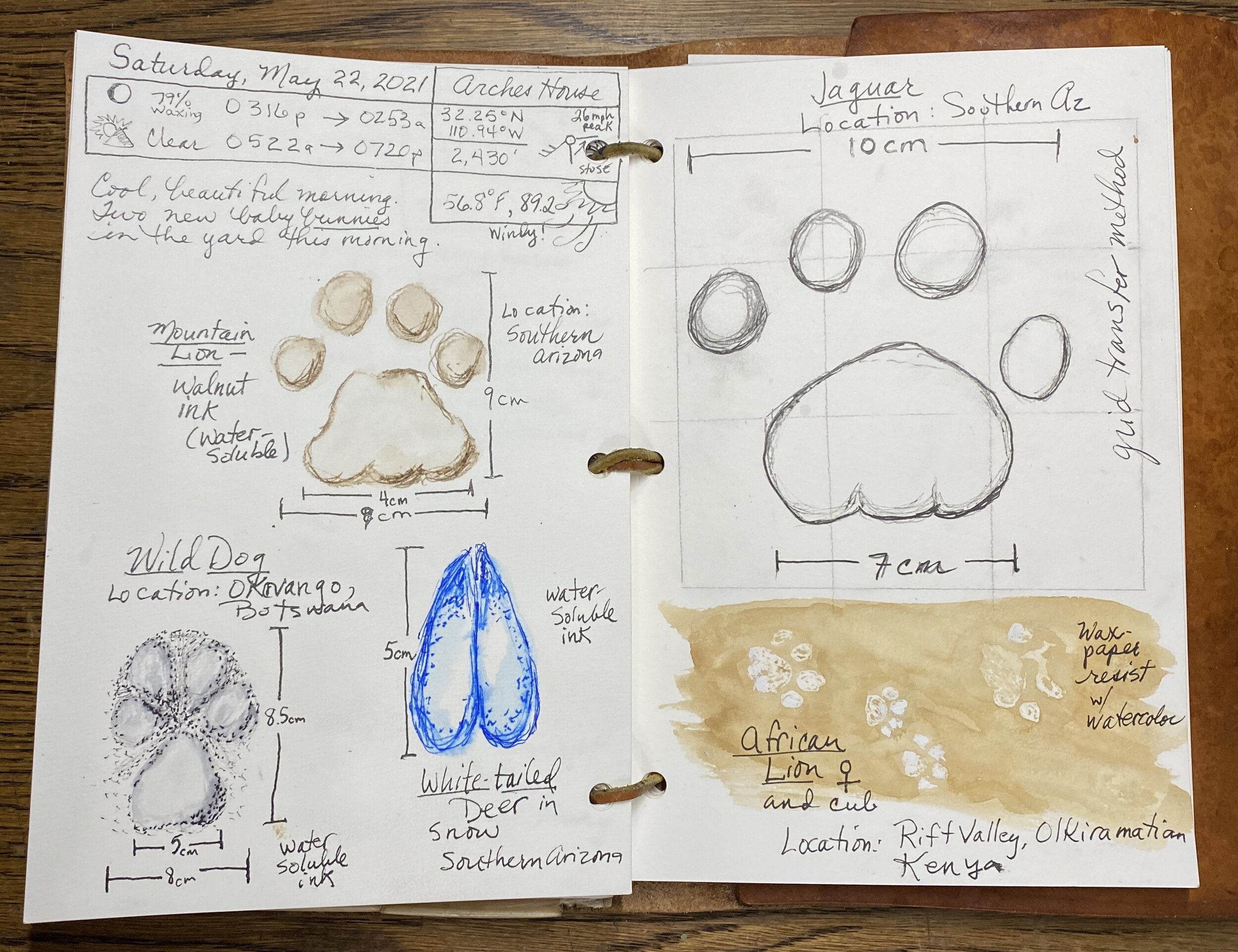
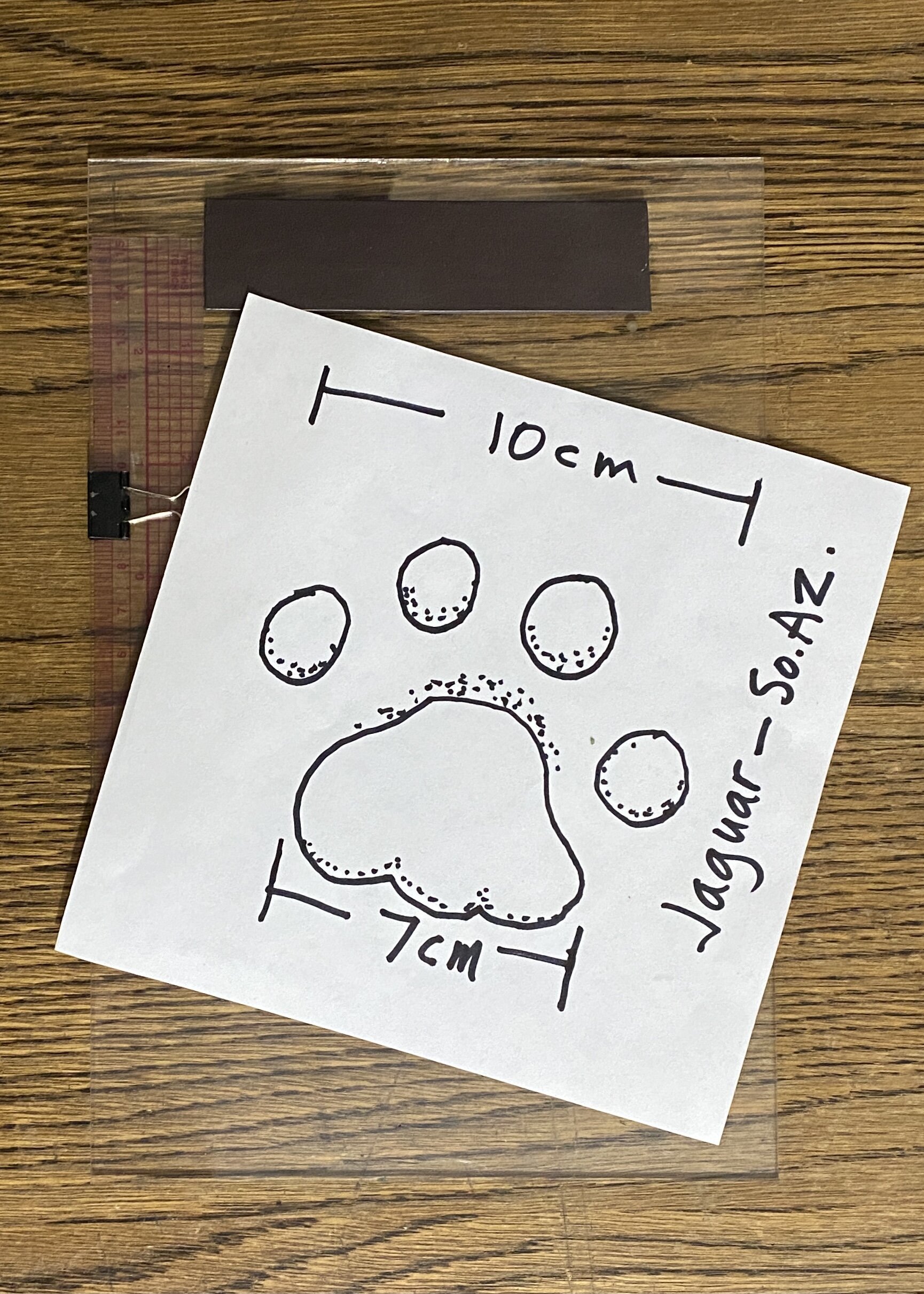
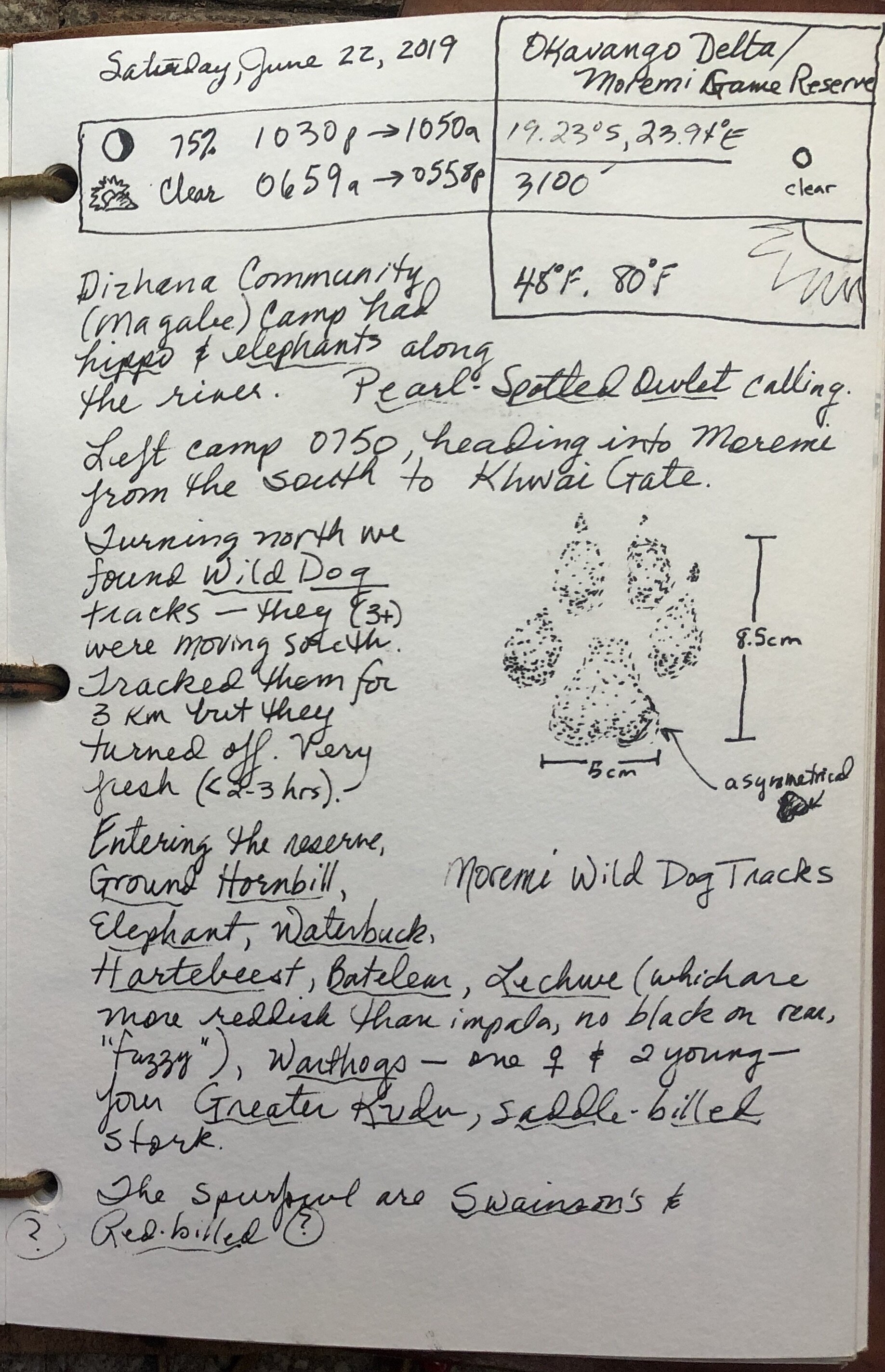

You can find my list of minimalist colors and tips on color mixing here: https://www.exploringoverland.com/field-arts-tutorials-list/2020/7/5/minimalist-watercolor-for-nature-journaling
ROSEANN’S DEMO IMAGES FROM THE WORKSHOP:
Mountain lion track (southern Arizona).
Wild Dog tracks (Botswana, Okavango Delta).
Mountain lion tracks (southern Arizona).
Field Arts Workshop: Cartography 101 for Field Notebooks
Let’s explore cartography for your nature journals and field sketchbooks. Adding maps is fun and although they can be challenging and even intimidating, they will greatly enhance not only your journals but your understanding of a place.
Traditional maps with features such as contours and shading to show relief
Linear maps that unfold or scroll from point-to-point on an exploration of a place or region
Picture-highlight maps of a place, including non-scale ideas for quick mapping
Behavior maps depicting such things as an animal foraging or defending a territory
Length: 2 hours
Resources from the Workshop
Google Interactive View of the Northern Ranges, Yellowstone:
Downloads (Cartographic Elements and Features):
JPG of cartographic elements and features (printable for your journals):
PDF of cartographic elements and features (larger format):
Video of Yellowstone Northern Ranges:
https://www.nps.gov/media/video/view.htm%3Fid%3D17806168-1DD8-B71B-0BE946127DB84B95
METADATA AND NATURE DATA for MAPPING LOCATION:
Location: Confluence of Yellowstone River and Lamar River, “Yell-Mar,” in the Northern Ranges
Latitude: 44 degrees 55’ 13” N
Longitude: 110 degrees 22’ 04” W
Elevation: 1849 meters (6066 feet)
Low:36 degrees F
High: 55 degrees F
Sunrise: 1135 am
Sunset: 0937 pm
Moon phase: 73% waning
ROSEANN’S FIELD NOTES PAGES from THE WORKSHOP:

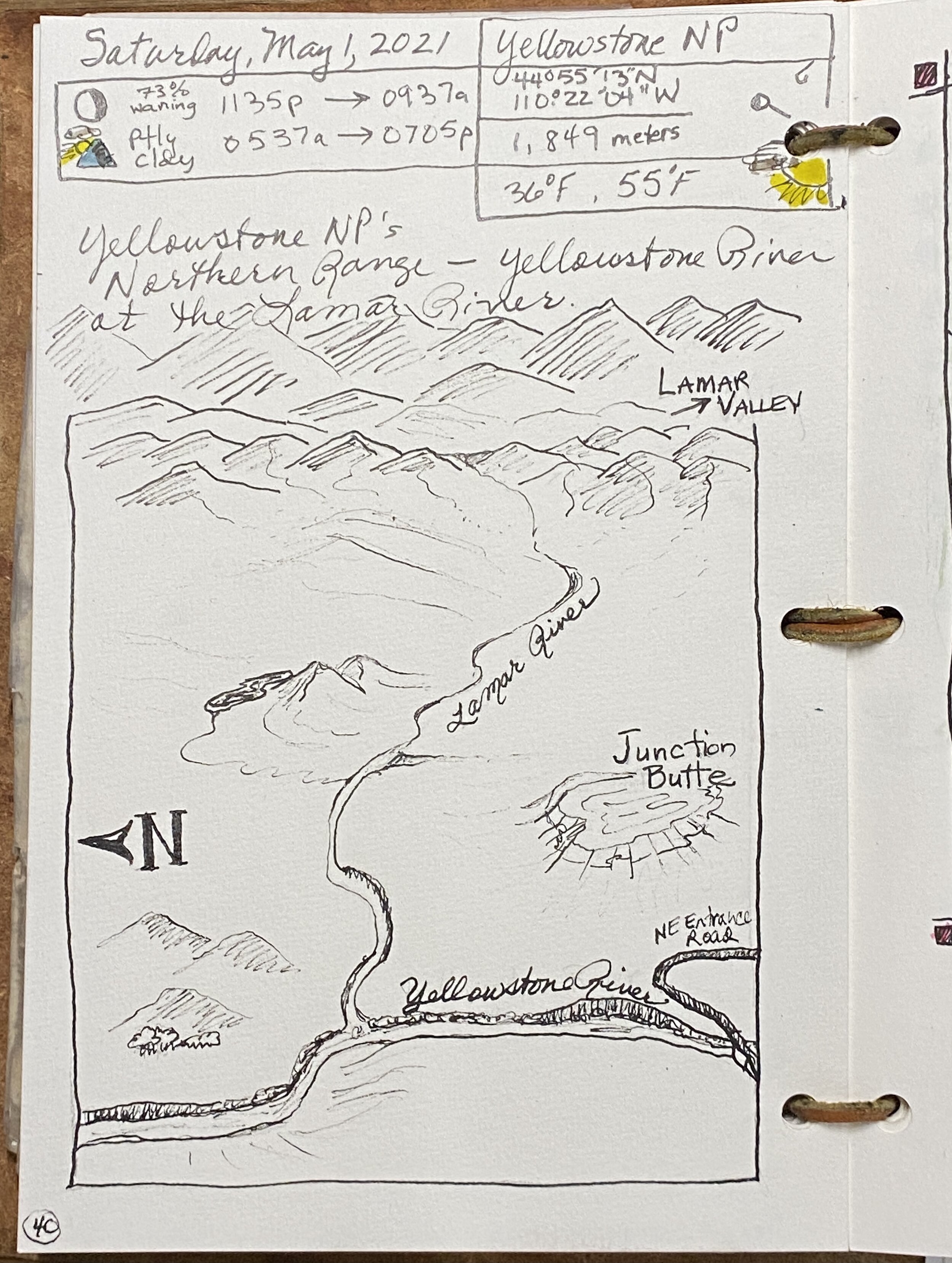



You can find my list of minimalist colors and tips on color mixing here: https://www.exploringoverland.com/field-arts-tutorials-list/2020/7/5/minimalist-watercolor-for-nature-journaling
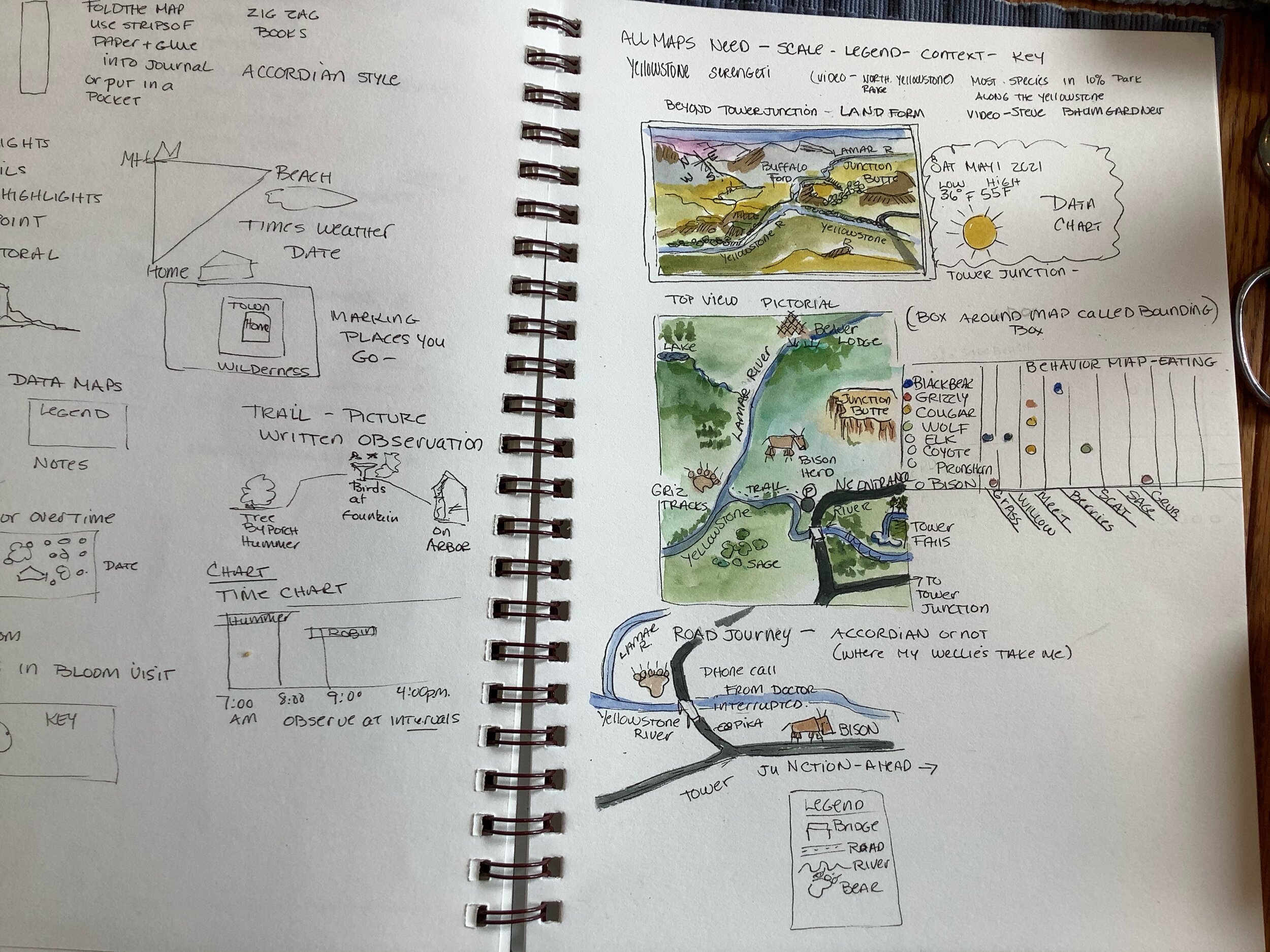
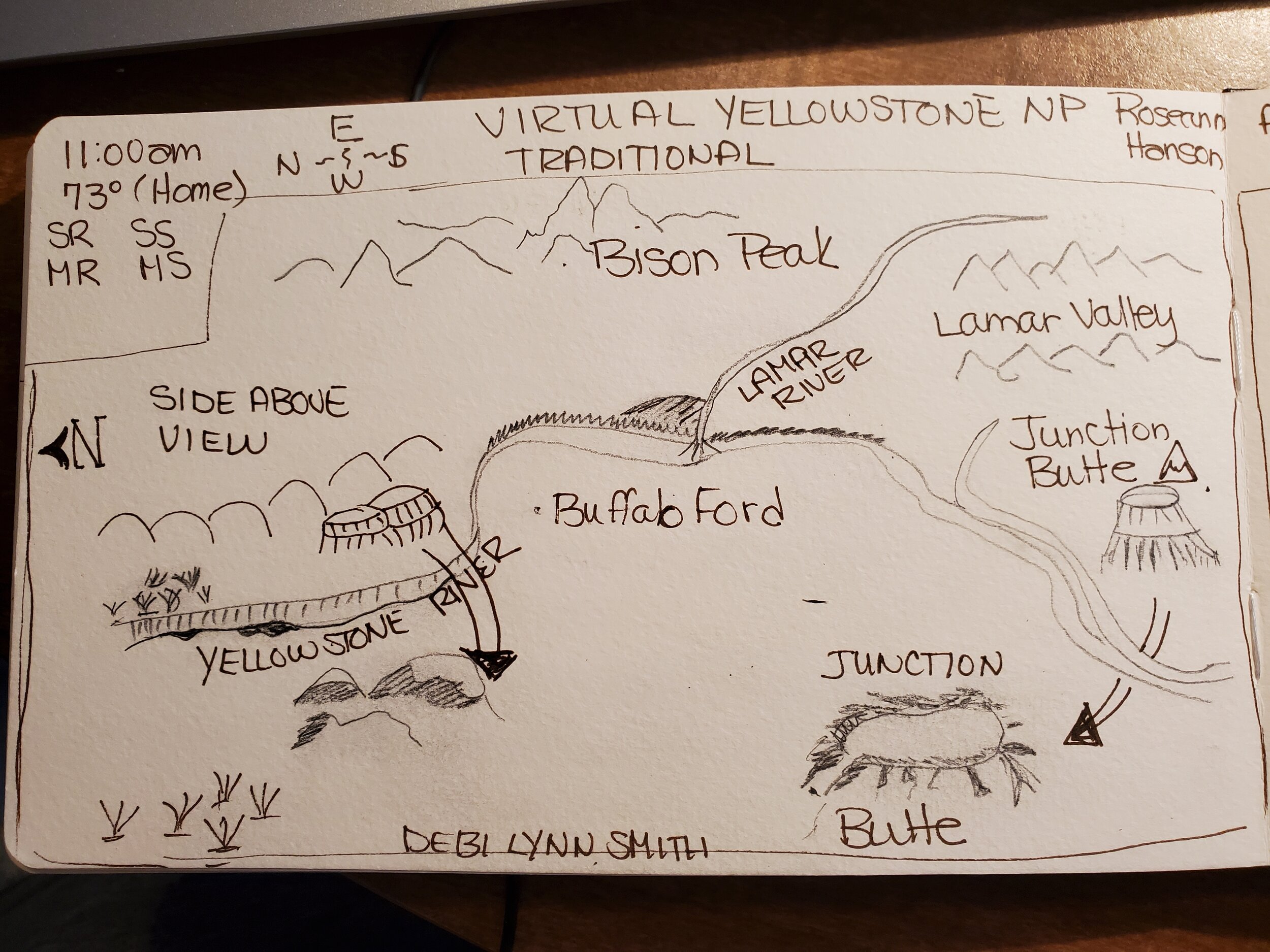
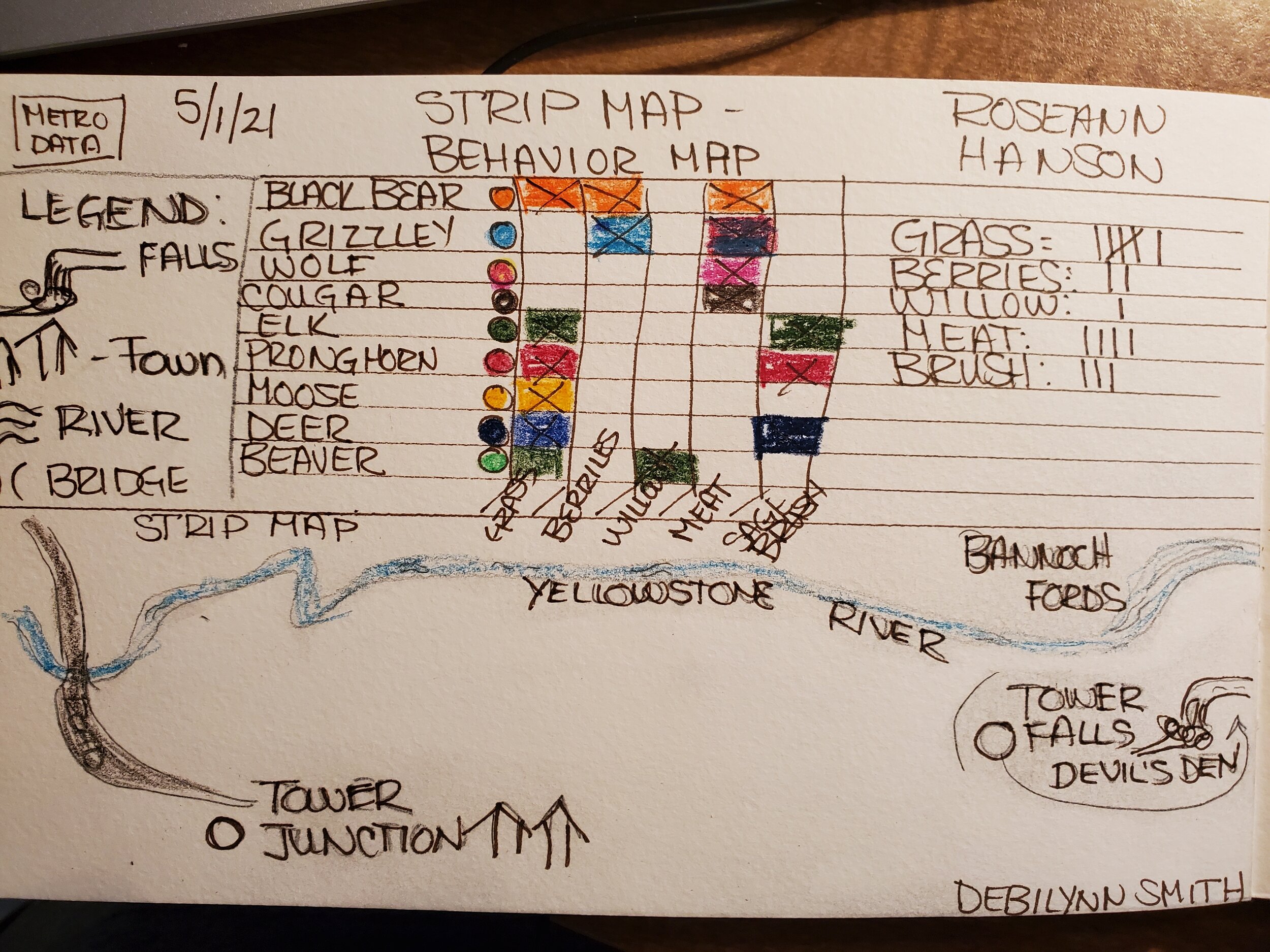
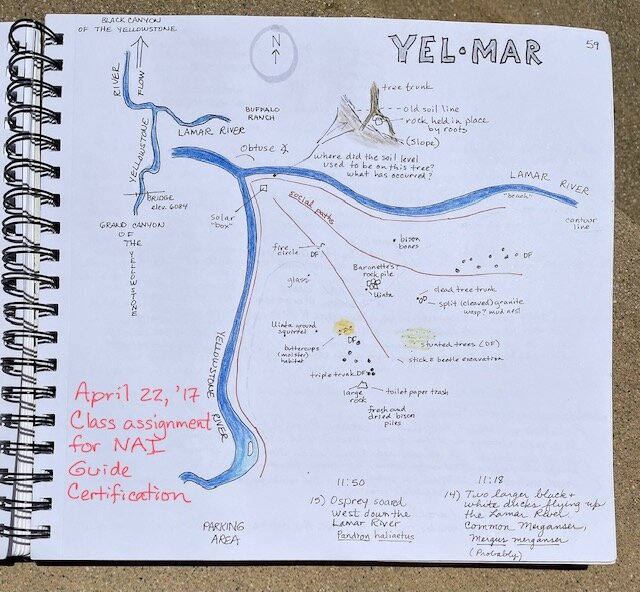
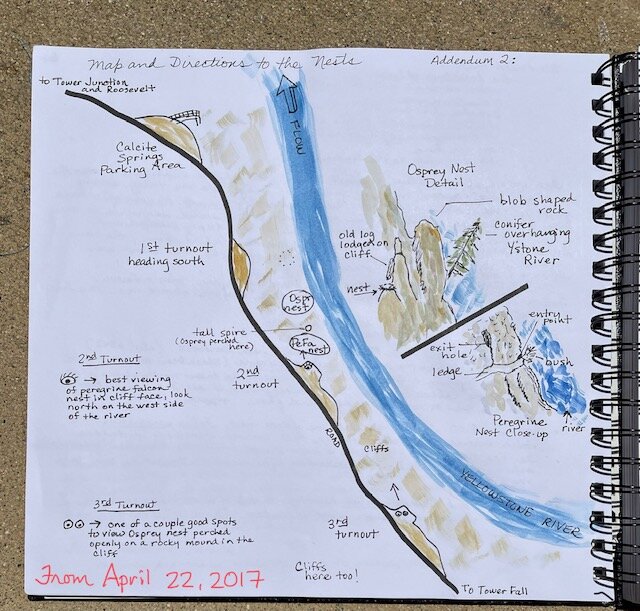

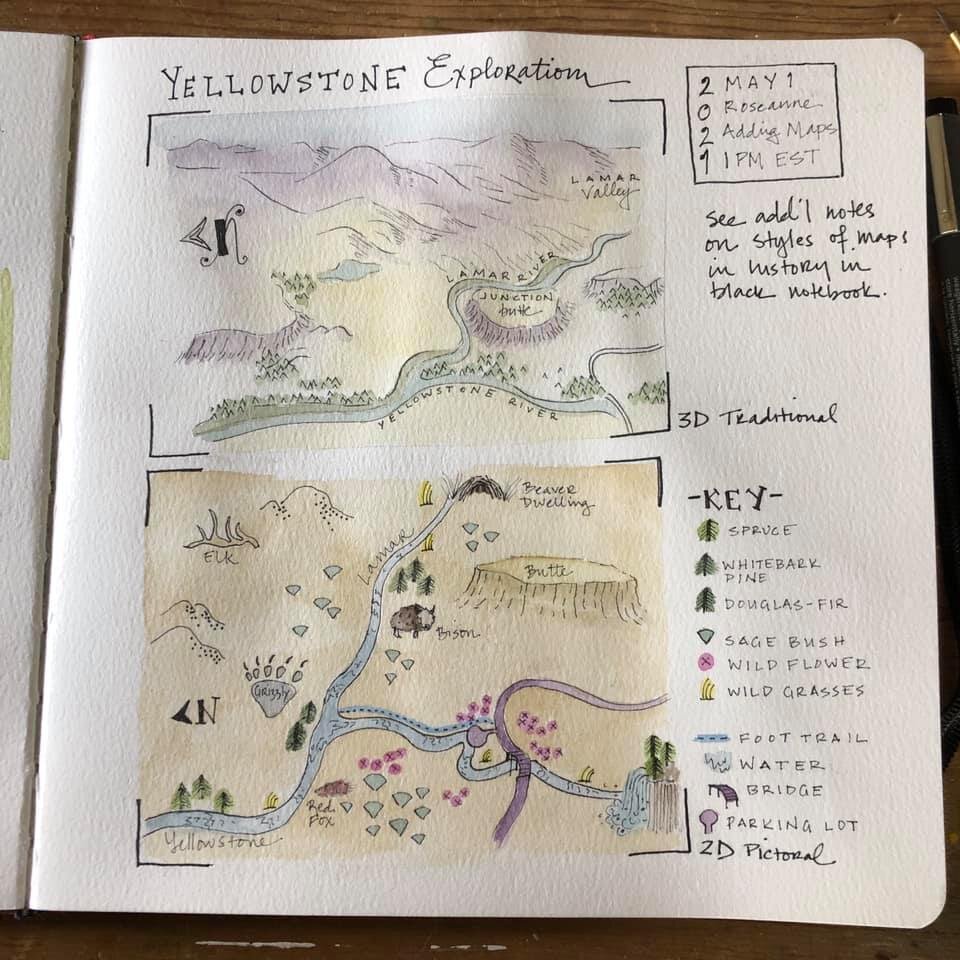
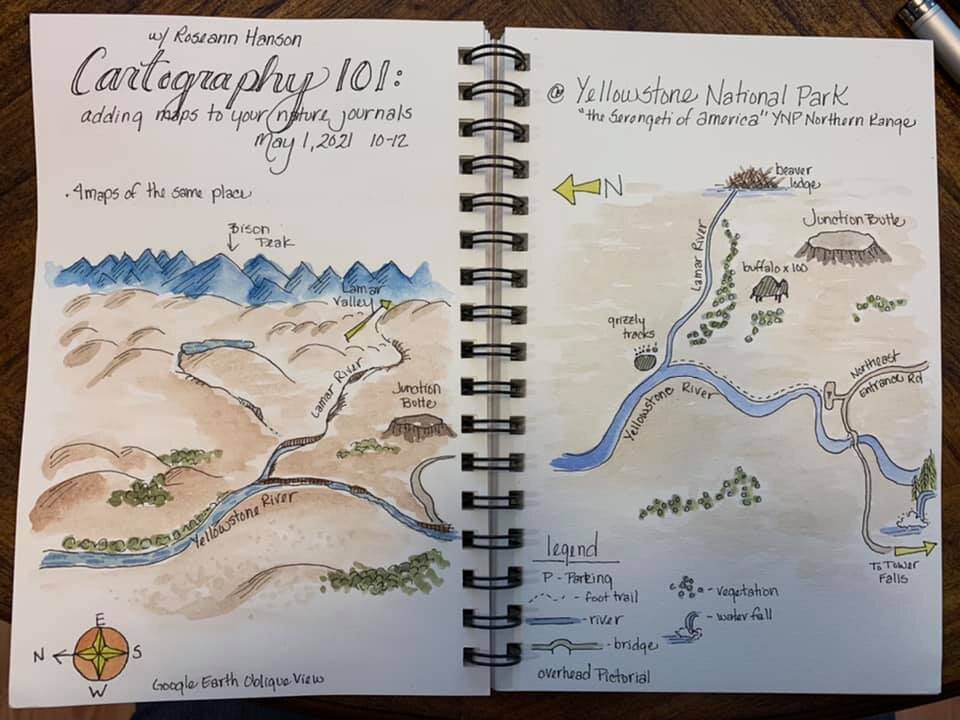
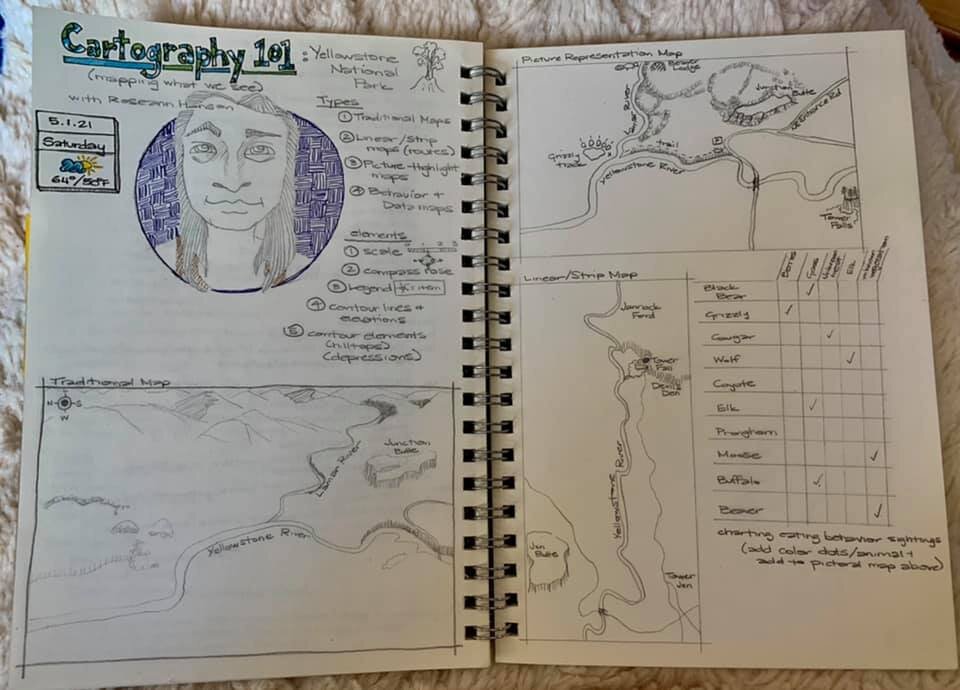
1. Traditional Map - original view
2. Pictorial Map - original view
3. Linear or Strip Map - original view
4. Behavior Map - original view
Field Arts Workshop: Optics 101, Choosing and using binoculars and scopes
Field optics are vital tools for naturalists and explorers. But the range of options can be confusing:
Porro or roof prism?
Best magnification / lens diameter combo?
Close focus?
Field of view?
Waterproof?
What is meant by BaK4 glass? Flat field? Multi-coating?
Jonathan and Roseann have been using field optics professionally for over 35 years—and were early fans of Swarovski Optik: Jonathan used an early pair of 10x50 Habichts in his sea kayaking business in the 1990s. They will walk you through all the elements of what makes a quality pair of binoculars or spotting scope, and what is worth paying for—or not. Using Swarovski, Leica, and a few other brands as examples, they will also make recommendations based on workshop attendees’ field uses (we’ll send you a questionnaire before the workshop).
This workshop is suitable for anyone who uses or is considering buying field optics: naturalists, travelers, explorers, birdwatchers, and hunters.
An interactive Q & A session will be included, with Ben Lizdas of Swarovski Optik.
When: Saturday, March 13, 2021
Length: 1.5 hours
SPECIAL DEAL: Note that for a limited time (March 13 – 28), 7P Overland will be offering select Swarovski optics in their shop with a special Exploring Overland deal: free shipping and a free cleaning kit. https://7p.io/product-category/expedition-optics/




